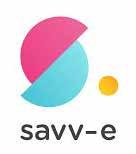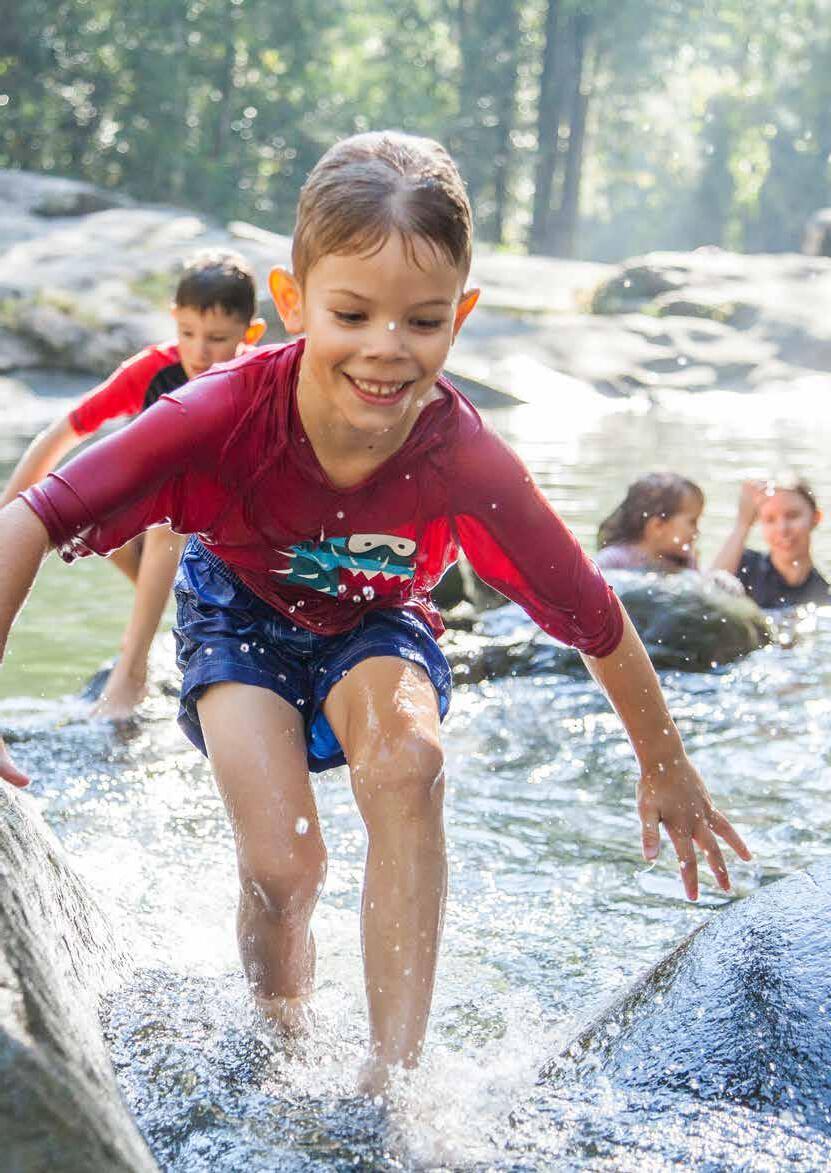
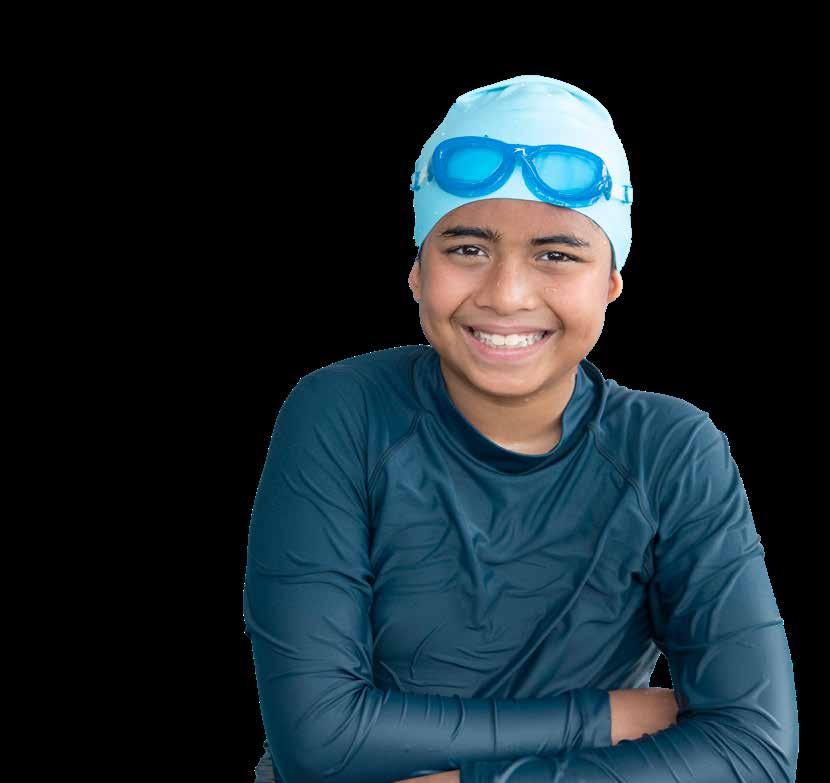
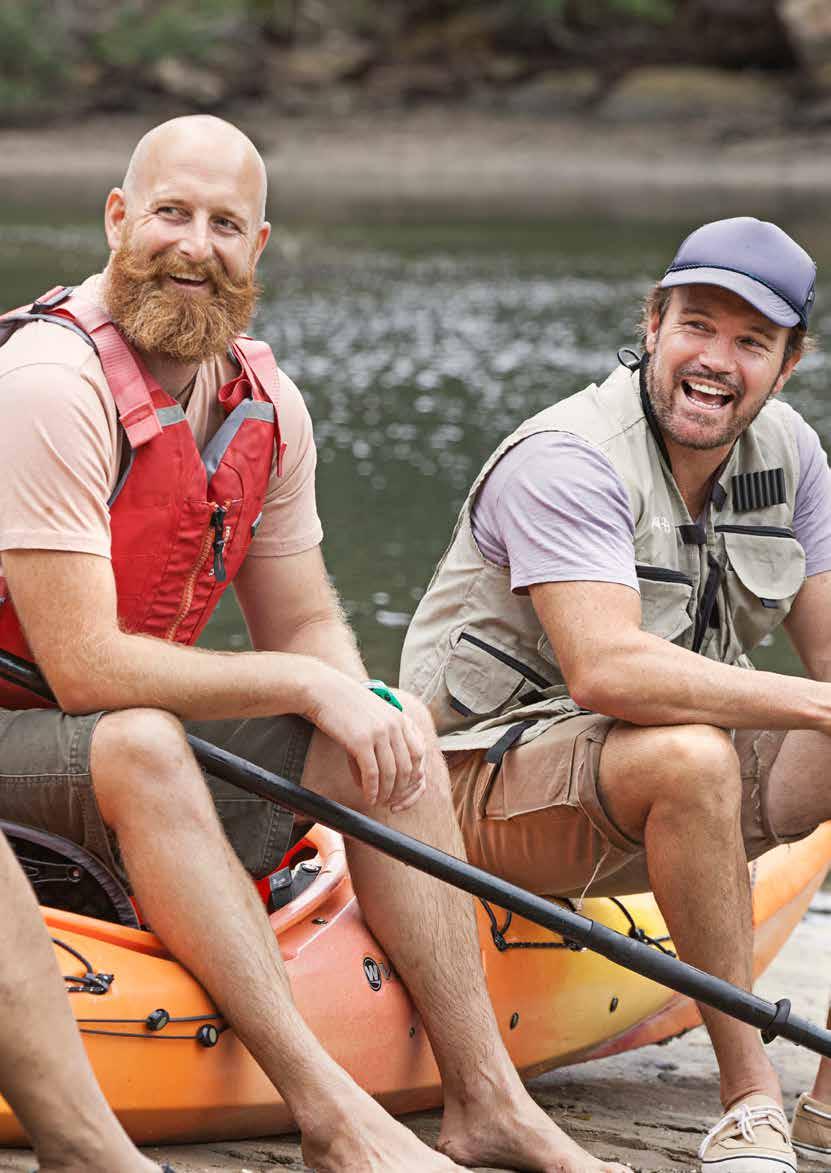






Succeeding Together 78 Honours and Awards
Governance 83 Financial Summary
ACKNOWLEDGEMENT OF COUNTRY
Royal Life Saving Australia acknowledges the Aboriginal and Torres Strait Islander people of this nation. We pay our respects to their Elders past, present and emerging, recognising their continued connection to land, waters and communities.
I have immense pride in presenting the Royal Life Saving Society – Australia Annual Report 2023-24, my first as President. It is a great honour to lead the Board and organisation as President and to work with an amazing group of committed volunteers and staff.
In this annual report, we share our renewed focus on bringing people together to eliminate drowning and empower communities to be safe around water. This mission would not have been achievable without the enthusiasm and deep commitment of our Royal Life Saving members, volunteers and staff.
This report highlights the hard work and achievements across the organisation, including:
National Drowning Report
I had the great honour of speaking at the launch of the National Drowning Report at Parliament House, Canberra, in August 2024 with the Assistant Minister for Immigration, the Hon Matt Thistlewaite MP and Surf Life Saving Australia President John Baker AM ESM. This was Royal Life Saving Australia’s 30th report, and it included a collage of reports going back to 1994. A lot of progress has been made, but still, 323 drowning deaths are far too many and should remind us of how important collaborative approaches to drowning prevention and water safety are in Australia.
The report made me reflect on the importance of collecting and analysing drowning data and other water safety information. It must be a challenging job for the research team, but one that is so important to inform government policy, conduct summer water safety campaigns and plan to keep communities safe over summer.
Keep Watch – It’s More Important than Ever
I’m alarmed our research shows that the drowning risk triples when children turn one. Over the past 20 years, 222 one-year-olds have drowned, making up 40 per cent of all child drownings under five. Once toddlers start walking, it is very hard to keep up, meaning that any lapse in supervision near an unfenced swimming pool can have tragic consequences.
Royal Life Saving Australia’s Keep Watch campaign reminds parents and carers of the serious risks of child drowning. The campaign targets children aged 0–4, promoting four key actions to prevent drowning: Supervise - Actively supervise children around water, Restrict - Limit children’s access to water, TeachInstruct children on basic water safety skills, and Respond - Learn how to react in emergencies.
As a parent, I think that there is no more important message ahead of summer.
Drowning Prevention for Multicultural Communities
In response to a tragic summer where an estimated 25 per cent of drowning deaths involved people born overseas, Royal Life Saving Australia hosted the Multicultural Water Safety Workshop with partners Life Saving Victoria in June 2024.
Those who attended committed to working together to remove barriers, increase participation and expand access to swimming and water safety education programs for people of all ages, backgrounds and abilities. Too often, water safety messages are not tailored to community groups, so I’m pleased that ensuring cultural relevance and robust communication of water safety messages was deemed to be a high priority.


Empowering the Next Generation:
10 Years of Bronze e-Lifesaving Lifesaving skills are so important, especially for teenagers. I know how difficult it can be keeping teenagers interested in programs such as the Bronze Medallion, so I’m pleased to acknowledge the 10th anniversary of the Bronze e-Lifesaving program, which is a pioneering and free e-learning initiative that has taught essential water safety skills to nearly 100,000 students from 1,000 schools nationwide. It is intended to supplement activities in the pool and provide the sort of engaging, interactive content that students enjoy while equipping teachers with the necessary tools to continue their vital role in water safety education.
Carolyn Asher Appointed Life Member
I was pleased when the Honours committee recommended Life Membership to Carolyn Asher, as her journey typifies many of the volunteers who have contributed to our mission for many years. Carolyn started with the Royal Life Saving Society in 1962 in Victoria and continued her active involvement in Queensland from 1991. For over five decades, Carolyn has delivered lifesaving courses and training sessions by saying, “The knowledge gained through Royal Life Saving can stay with you for a lifetime and may one day save your life or the lives of others.” This philosophy has been at the heart of her life’s mission and is familiar to many of us.
World Conference on Drowning Prevention 2023
I was pleased to welcome over 750 delegates from 50 countries to the World Conference on Drowning Prevention (WCDP) at the Perth Conference and Exhibition Centre in December 2023. This conference coincided with significant global momentum in drowning prevention efforts, including the United Nations General Assembly’s adoption of a Global Drowning Prevention Resolution in 2021 and the announcement of the World Health Organization (WHO) Global Partnership for Drowning Prevention in 2023. The event was highly focused and collaborative and showcased drowning prevention approaches here and abroad. I thank Surf Life Saving Australia for co-hosting, and I know that the team was very appreciative to have the support of Royal Life Saving Western Australia in the delivery of the event and associated workshops.
Thank you
We deeply appreciate the dedication and professionalism of our volunteers, employees, Board members, trainers, officials and other key stakeholders across all states and territories. Their hard work is invaluable, and I extend my heartfelt thanks to them.
I also want to express my gratitude to Deputy President Jim Whiteside, my fellow Board Directors, and the members of the Finance and Audit Committee—good governance truly relies on a collective effort.
A special thank you to our national office team, including our Chief Executive Officer Justin Scarr, as well as National Manager – Marketing and Events Monique Sharp for her work on this report and National Finance Manager Linda Luu for preparing the financial statement.
In light of several tragic summers, our goal of a nation free from drowning is more urgent than ever, making collaboration at national, state, territory and local levels essential.
ALEXANDRA ASH
National President
Royal Life Saving Society – Australia


This year, we celebrate the achievements and impact of Royal Life Saving teams nationwide. Our successes are tempered by another sobering summer. Changing patterns of behaviour around water and weaknesses in swimming and water safety skills across the Australian population continue to challenge our efforts to reduce drowning and promote safe water enjoyment for everyone.
Some personal highlights from 2024 include:
Australian Water Safety Strategy
I’m excited that we are conducting a mid-term review of the Australian Water Safety Strategy 2030 in collaboration with members of the Australian Water Safety Council.
Workshops have already been conducted to address key areas, including young males, multicultural water safety, diving and snorkelling safety, and boating and watercraft safety. These events have provided crucial opportunities to review progress and consider the adjustments that might accelerate progress.
I’m excited that we have launched an online interactive Drowning Data Dashboard. This tool provides access to information from the Royal Life Saving National Fatal Drowning Database, dating back to 1 July 2002.
It promises to serve as an invaluable resource for lifesaving organisations, government agencies, journalists and students by allowing them to explore data previously featured in National Drowning Reports. Users can create custom line and bar charts, as well as tables that display drowning counts and rates per 100,000 people, with filtering options for various criteria. We look forward to seeing how this tool is used and updating it with further innovation in the coming months.
Global Momentum
Global momentum for drowning prevention is growing. As Alex mentioned, we were proud to host the World Conference on Drowning Prevention (WCDP) 2023 and have been able to support further global developments. The World Health Organization (WHO) has been working on the Global Status Report on Drowning Prevention, which aims to assess the context of drowning across more than 130 countries. The Global Alliance for Drowning Prevention met twice to develop a strategic plan, which was unveiled on World Drowning Prevention Day 2024.
The plan outlines essential areas for advocacy, capacity building and the formulation of a Global Strategy for Drowning Prevention. We look forward to the opportunities that emerge regionally as well as globally.
In line with our commitment to bringing people together to build solutions, the National Workforce Symposium in Melbourne in March 2023 gathered 50 industry leaders to reimagine a forward-looking National Aquatic Workforce Framework.
With a range of opportunities and challenges on people’s minds, the Symposium aimed to ensure that every community in Australia has access to safe swimming environments supported by a workforce that is safe, capable, sustainable and strengthened. The subsequent National Aquatic Workforce Framework was launched shortly after.
As part of Royal Life Saving Australia’s commitment to developing and strengthening the national aquatic industry workforce while enhancing safety standards across the sector, we have introduced the Supervision Planning online module to our expanding portfolio of e-learning tools. This module explores the complexities of supervision planning, addressing factors such as facility design, environmental conditions, available resources, swimmer demographics and the range of activities offered. It integrates supervision planning within a comprehensive safety management system, identifying potential vulnerabilities by considering all relevant elements.

A central theme of the Australian Water Safety Strategy 2030 is the creation of a Local Water Safety Plan for every community. We’ve been working to perfect approaches and are rapidly learning that one size does not fit all communities. These plans outline community-based drowning prevention initiatives tailored to the unique needs and contexts of each area, so differ from place to place.
We have been actively supporting the development of these plans across the country for several years because we believe fundamentally that activating and focusing local networks is a great way to prompt action that saves lives.
We sincerely appreciate the support of the Australian Government. We extend our gratitude to the Minister for Sport and Minister for Aged Care, the Hon Annika Wells MP, for the government’s strong commitment to ensuring the safety of Australians around water.
We welcome two new partners this year. Myrtha Pools recognised our research, advocacy, and the importance of leading the case for the revitalisation of community pools across the country. Recognising the urgent need for enhanced safety measures, we have partnered with Lynxight, which is leading developments in artificial intelligence (AI) technology to improve safety management at aquatic centres. We thank them both for their support.
Thank you
I’d like to thank the national team for their very substantial achievements throughout the year. I specifically thank Monique Sharp, RJ Houston, Linda Luu and Stacey Pidgeon for their leadership and the state and territory executive staff for their collaboration.
We are thankful for the support and leadership demonstrated by our President Alexandra Ash, Deputy President Jim Whiteside, and all members of the Board. We thank the Finance and Audit Committee, Honours Committee and the state and territory member organisation Chief Executive Officers and staff for their commitment to our mission.
JUSTIN SCARR Chief Executive Officer
Royal Life Saving Society - Australia

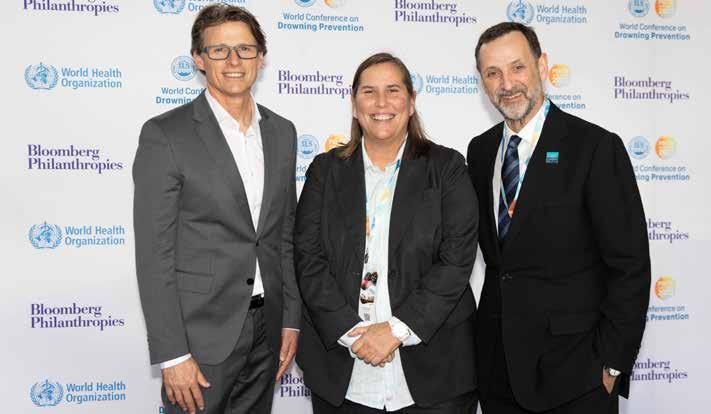

Bringing people together to eliminate drowning and empower communities to be safe around water.
OUR PURPOSE
Eliminate drowning.
OUR VISION
A water-loving nation free from drowning.

WE BELIEVE
Drowning is preventable. Being able to swim is a human right. Having the skills to enjoy the water safely is essential.
Access to safe places to swim contributes to happy, healthy, connected communities.
OUR VALUES
We value fairness, kindness, mutual respect and acting with empathy.
We value partnerships with impact, creating positive change, and solving problems with partners.
We value quiet determination, bold decisions, and doing the right thing above all else.
We value building and supporting communities with shared values, common purpose and deep commitments to diversity, equity, and inclusion.

Leadership
Research
Partnerships
Purpose
People SUCCEEDING

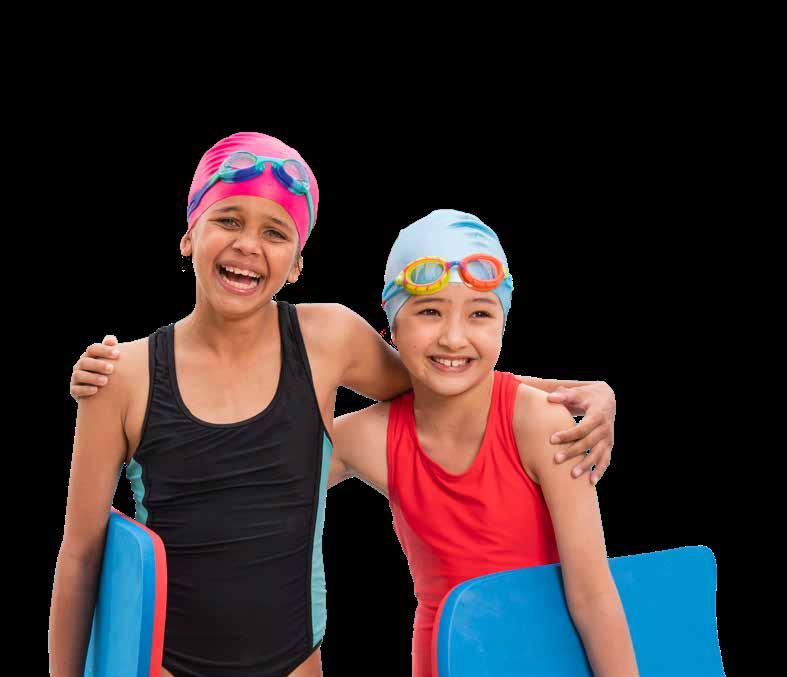
Provide leadership, advocacy, and research to national, state, and community approaches to drowning prevention and water safety.
KEY ACHIEVEMENTS
Leadership and commitment to the Australian Water Safety Strategy 2030
Management of the Summer Drowning Toll
Research and release of the National Drowning Report 2024
Recognition of 30 years of the National Drowning Report
Launch of the Drowning Data Dashboard
Updated Report on Drowning Among Multicultural Communities in Australia – 2013-14 to 2022-23
Project Partnership: Intertwining Indigenous
Ways into Water Safety Initiatives
Journal articles published
Hosted the World Conference on Drowning Prevention 2023
Member of the Global Alliance for Drowning Prevention
Published framework for identifying opportunities in multisectoral drowning prevention
Contributor to the Global Status Report on Drowning Prevention
Facilitated the International Women’s Day Webinar



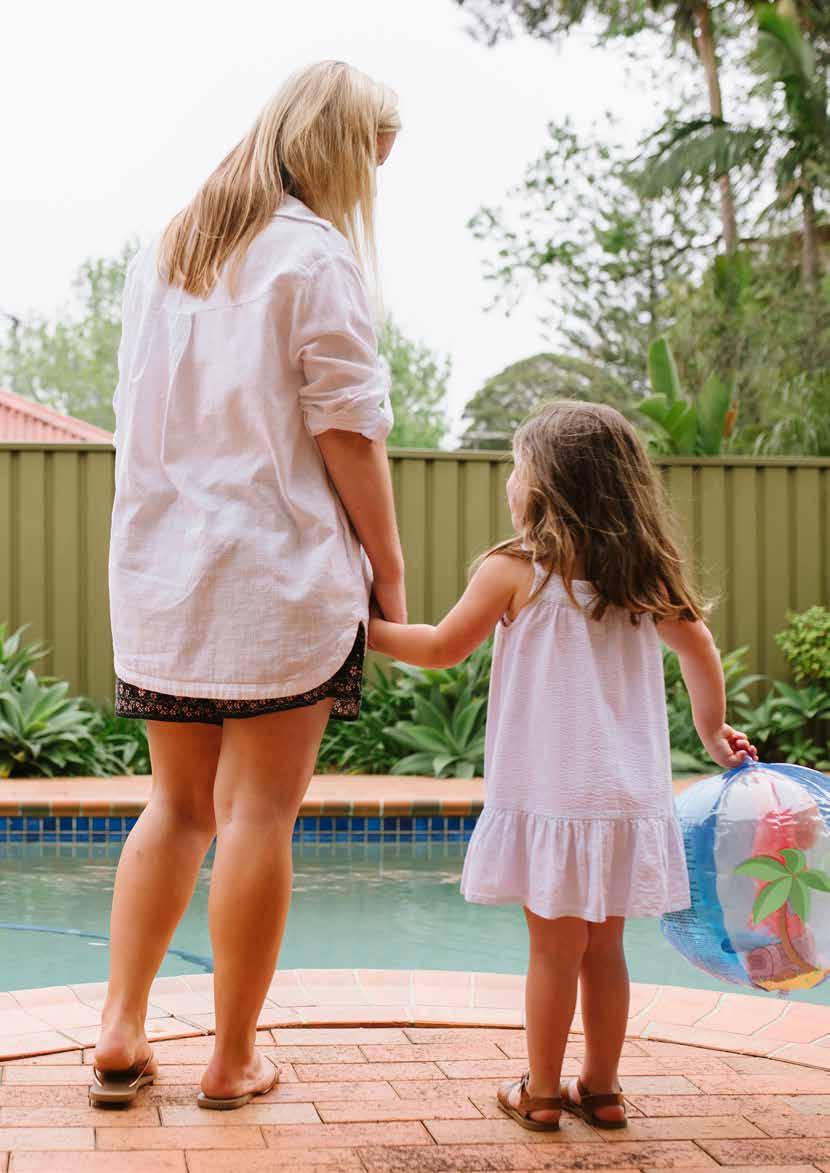
Royal Life Saving Australia plays a key leadership role in managing the secretariat of the Australian Water Safety Council (AWSC), with the support of the Australian Government and in close collaboration with foundation members Surf Life Saving Australia and AUSTSWIM.
Royal Life Saving Australia allocates significant resources to the implementation of the Australian Water Safety Strategy (AWSS) and has overseen the development, release, and ongoing evaluation of the Australian Water Safety Strategy 2030.
The AWSS 2030 sets an aspirational goal of reducing drowning by 50 per cent by 2030. It serves as a critical framework guiding national, state, territory and community efforts to prevent drowning and promote safe use of waterways and swimming pools.
The strategy outlines key activities across areas such as research, policy, advocacy, collaboration, education, safe environments and workforce development, all linked to medium-term outcomes and long-term targets. Additionally, it includes a comprehensive plan for ongoing monitoring and evaluation to measure progress and ensure sustained impact.
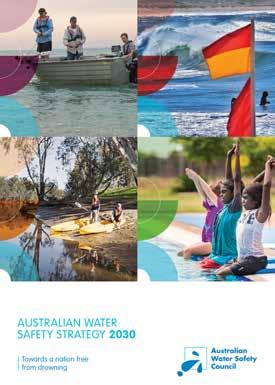
As part of the mid-point review of the AWSS 2030, Royal Life Saving Australia, in collaboration with members of the Australian Water Safety Council, organised a series of significant events throughout 2023-2024, including:
Young Males Drowning Prevention Workshop
October 2023, Melbourne
Multicultural Water Safety Workshop
June 2024, Melbourne
Diving and Snorkelling Safety Webinar
August 2024, Online
Boating and Watercraft Safety Workshop
August 2024, Sydney
These events provided crucial opportunities for stakeholders to collaborate, review progress and continue advancing the AWSS’s goals.
Young males aged 15–29 years are a key focus of the Australian Water Safety Strategy (AWSS), as they continue to be overrepresented in national drowning statistics. In October 2023, a Young Males Drowning Prevention Workshop was hosted in Melbourne to address this issue.
In preparation for the workshop, the Royal Life Saving Australia research team conducted a rapid analysis of drowning deaths in this population based on data from the National Fatal Drowning Database.
The analysis revealed that between July 2002 and June 2023, 985 young males between the ages of 15 and 29 died from drowning in Australia—an average of 47 deaths per year. Young males were disproportionately more likely to drown at beaches, rivers, creeks, lakes and dams or from jumping off rocks, and were often further from home. A higher percentage of drowning deaths in this group involved confirmed alcohol consumption, and many victims were born overseas.
The workshop underscored the urgent need for targeted interventions and collaborative efforts to reduce drowning among young males, aligning with the priorities of the AWSS 2030.



The workshop included:
A review of statistics and research on young male drowning.
Presentations from experts outside water safety.
A panel discussion featuring young males working in drowning prevention and aquatics.
An assessment of male-focused drowning prevention campaigns from Australia and New Zealand.
Table-top discussions to evaluate and prioritise key actions from the Australian Water Safety Strategy.
Major Priorities Identified:
1. Renewing the focus on high school-based water safety education.
2. Involving young males in the development of drowning prevention initiatives.
3. Enhancing campaign messaging strategies to effectively reach this group.
4. Collaborating across sectors for collective impact. Young Males 15-29 Years


The Australian Water Safety Strategy 2030 prioritises addressing drowning within migrant communities. In response to a tragic summer where an estimated 25 per cent of drowning deaths involved people born overseas, Royal Life Saving Australia and Life Saving Victoria hosted the Multicultural Water Safety Workshop in June 2024.
The event brought together over 60 delegates from across Australia, including multicultural community leaders, government officials, academics and water safety professionals and focused on identifying high-level solutions to address drowning risks among Australia’s multicultural communities.
The Workshop Statement outlined key principles for guiding drowning prevention efforts that prioritise multicultural communities:
Respectful relationships
Collaboration and experience sharing
Co-design and community consultation
Genuine representation and belonging
Welcoming, accessible and equitable spaces
Core takeaways from the Workshop:
1. Fostering cross-sectoral partnerships and collaboration is critical to driving community-level change.
2. Sustained and expanded investment is needed to continue and scale targeted programs across Australia.
3. Co-designing education campaigns and safety messages with the community is essential from the outset—what works for one community may not work for another.
4. Robust communication of water safety messages must go beyond translation and signage to ensure cultural relevance and understanding.
5. Removing barriers, increasing participation and expanding access to swimming and water safety education programs for people of all ages, backgrounds and abilities is crucial.
The forum reinforced the need for culturally inclusive approaches to drowning prevention, emphasising collaboration, co-design and long-term investment to ensure the safety of Australia’s multicultural communities.


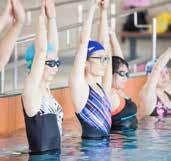



In August 2024, the Australasian Diving Safety Foundation and Royal Life Saving Australia co-hosted a webinar focused on diving and snorkelling safety in Australia. The event brought together over 50 experts from across the field to participate in an interactive session aimed at reviewing the Diving and Snorkelling section of the Australian Water Safety Strategy 2030.
The event provided valuable insights into divingrelated health risks and strategies for enhancing safety, reinforcing the commitment to improving safety protocols within Australia’s diving and snorkelling communities.
The webinar featured presentations from three world-leading dive medicine specialists:
Dr John Lippmann OAM, Chairman and CEO, Australasian Diving Safety Foundation: Scuba Diving Fatalities in Australia
Professor Simon Mitchell, Head of Department of Anaesthesiology, University of Auckland: Decompression Illness
Dr Neil Banham, President, South Pacific Underwater Medicine Society, WA Health - Fiona Stanley Hospital Hyperbaric Medicine Unit: Immersion Pulmonary Oedema Diving and Snorkelling
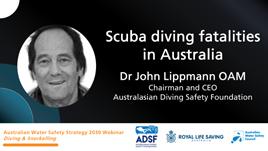

royallifesaving.com.au/diving-andsnorkelling-webinar
Boating and watercraft activities are increasingly popular in Australia, with an estimated 20 per cent of the population participating annually.
However, drowning remains the leading cause of boating-related fatalities. While drowning deaths in this area have steadily decreased, more work is needed to address critical safety factors such as lifejacket use and boating under the influence of alcohol.
As a priority area within the Australian Water Safety Strategy, 20 representatives from the boating industry and safety agencies convened at the Australia New Zealand Safe Boating Education Group meeting in August 2024 in Sydney.
The meeting focused on advancing the strategy, with participants discussing initiatives to promote safer boating practices and reduce fatalities through targeted education and enforcement efforts.

Since the 2018-19 summer season, Royal Life Saving Australia has tracked and reported drowning deaths over the summer months. The core purpose of the Summer Drowning Toll is to inform the public and media about drowning deaths during this period, as well as to support media coverage, awareness updates and water safety messaging.
For the 2023-24 summer season, Royal Life Saving Australia introduced a Summer Drowning Toll interactive data dashboard. This new system allows users to compare the current summer’s data with last summer’s figures and the five-year average while also providing the ability to filter by state or examine national-level data. The dashboard makes it easier to access and understand drowning statistics in a visual format.
Between 1 December 2023 and 29 February 2024, the Summer Drowning Toll recorded 99 drowning deaths across Australia. Tragically, this represents a 10 per cent increase from the 90 drowning deaths recorded last summer and a five per cent increase over the five-year average of 94 drowning deaths.
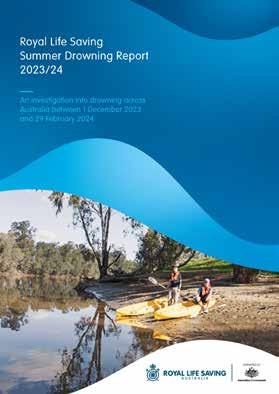
2023-24 Summer Drowning Trends:
26 per cent of all drowning deaths occurred during the week between Christmas and New Year.
26 per cent of those who drowned were older adults aged 55 years and over.
10 per cent were children aged 0–14 years.
Seven per cent of the drowning deaths were floodrelated, occurring in Queensland and Victoria.
All states and territories reported an increase in drowning compared to last summer, except for New South Wales, the Australian Capital Territory and South Australia.
10 per cent of drowning victims were overseas tourists on holiday in Australia.
Many drowning incidents occurred at unpatrolled or isolated locations, including beaches, rivers, lakes and dams.
The Summer Drowning Toll continues to serve as a critical tool for raising awareness and guiding water safety efforts across Australia.
Disclaimer: Figures are interim only and derived from media reports and may change in the future pending coronial investigations.
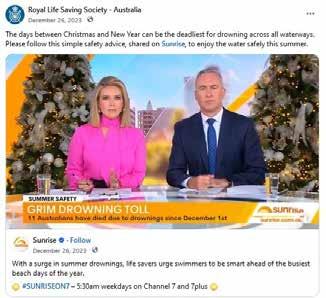

The National Drowning Report 2024, published by Royal Life Saving Australia in partnership with Surf Life Saving Australia, was launched by the Hon Matt Thistlewaite MP, Assistant Minister for Immigration, in Parliament House, Canberra on 20 August 2024.
The report revealed there were 323 drowning deaths over the past 12 months, a 16 per cent increase compared to the ten-year average of 278 drowning deaths.
At the launch, Royal Life Saving Australia Chief Executive Officer Justin Scarr emphasised the urgent need to invest in community resilience to prevent drowning and to strengthen swimming and water safety skills among both children and adults, particularly in regional and migrant communities.
“This year’s report is a reminder that many Australians now lack the skills to swim, float, or stay safe in the water. Drowning prevention starts at home, in schools, and at local pools. We must ensure no child or adult misses out on learning to swim and that all Australians have access to a safe place to swim, starting with a great local swimming pool,” Scarr said.
Federal Minister for Aged Care and Sport The Hon Anika Wells MP reiterated the Australian Government’s commitment to supporting organisations like Royal Life Saving Australia and Surf Life Saving Australia in raising water safety awareness.
“Enjoying a swim has so many benefits, especially for older adults. If you are over 55 and love the water, having a presummer medical check-up to ensure you are swim-fit and refreshing your skills at the local swimming pool are two great water safety ideas ahead of summer,” Minister Wells said.
Left: Alexandra Ash, President, Royal Life Saving Australia; Matt Thistlewaite MP, Assistant Minister for Immigration; Libby Coker MP, Chair of Joint Standing Committee on the National Disability Insurance Scheme; John Baker AM ESM, President, Surf Life Saving Australia.
Right: Justin Scarr, CEO, Royal Life Saving Australia
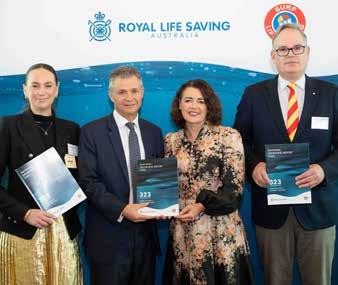
DROWNING REPORT 2024




READ THE REPORT AND WATCH VIDEO royallifesaving.com.au/ NDR2024
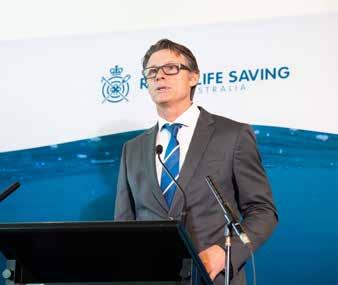
Drowning Fatalities in Young Children
Continue to Decrease
Reducing drowning among young children (0–4 years) remains one of our greatest long-term successes, with fatalities 25 per cent below the 10-year average. Legislative changes, environmental redesigns (such as pool fencing), education and research have played pivotal roles in addressing what was once a national crisis.
While 10-year-old children have the lowest drowning rates, the risk increases dramatically as they grow older, with drowning rates rising more than tenfold by age 20. Pool closures due to the COVID-19 pandemic exacerbated this issue. Reaching late teens with awareness campaigns remains a challenge, making it essential to build swimming and lifesaving skills in children aged 8 to 14 years.
The report shows that 83 drowning deaths (25 per cent) involved people born overseas. Long-term research suggests that this rate may be as high as 34 per cent. The first months and years in Australia are critical for building awareness, knowledge and skills to prevent drowning. Communities from countries like India, China and Nepal are increasingly taking the lead in raising awareness and promoting swimming and water safety programs.
Regional areas, such as the Top End in the Northern Territory, Torres and Cape in Queensland and the Kimberley in Western Australia, experience drowning rates four to six times the national average. In urban areas, cities like Darwin, Sunshine Coast, Hobart, Gold Coast and South Perth rank among the top five for drowning rates, often far exceeding the national average. Some local governments are responding by implementing community drowning prevention plans, investing in frontline services and supporting local swimming pool infrastructure. However, further infrastructure and program support are urgently needed across all levels of government.
Adults aged 65 and older are drowning at rates two to three times higher than children under five, accounting for 28 per cent of all drowning deaths. Contributing factors include underlying medical conditions such as heart issues, especially during boating or watercraft activities and accidental falls into water. Changing lifestyle patterns, increased participation in water sports, declining safety skills and decreased swimming fitness may also play a role in this worrying trend.
323
Drowning Deaths in 2023/24
82% OF ALL DROWNING DEATHS WERE MALES
TOP 3 LOCATIONS
16% increase
278 10-Year Average
Established in 1995, the National Drowning Report was created to raise awareness about drowning and advocate for prevention efforts directed at governments, the media and the public.
While the report’s presentation, depth and complexity have evolved significantly over time, its core purpose remains the same: to increase awareness of drowning risks, provide data to inform and guide prevention strategies and communicate effective risk reduction measures.
Over the past 30 years, these reports have driven significant changes in the approach to drowning prevention. The National Drowning Report has influenced key policy changes at the national, state, territory and local government levels, including:
• Pool fencing legislation
• Boating safety regulations
• Aquatic industry supervision policies
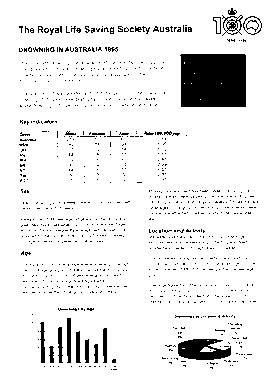





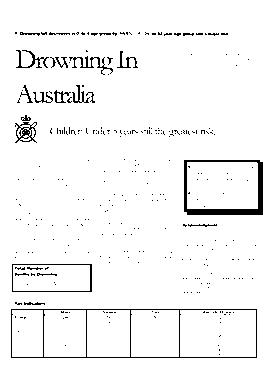






































In furthering our commitment to water safety, we launched an online interactive Drowning Data Dashboard where users can find information dating back to 1 July 2002 from the Royal Life Saving National Fatal Drowning Database.
This new tool is an invaluable resource for lifesaving organisations, government, journalists and media, and students and researchers to search for data previously published in National Drowning Reports.
Users can create custom line charts, bar charts, and tables displaying drowning counts and rates per 100,000 people, with options to filter by various settings. The dashboard is updated annually when the National Drowning Report is released and periodically throughout the year as more data becomes available.
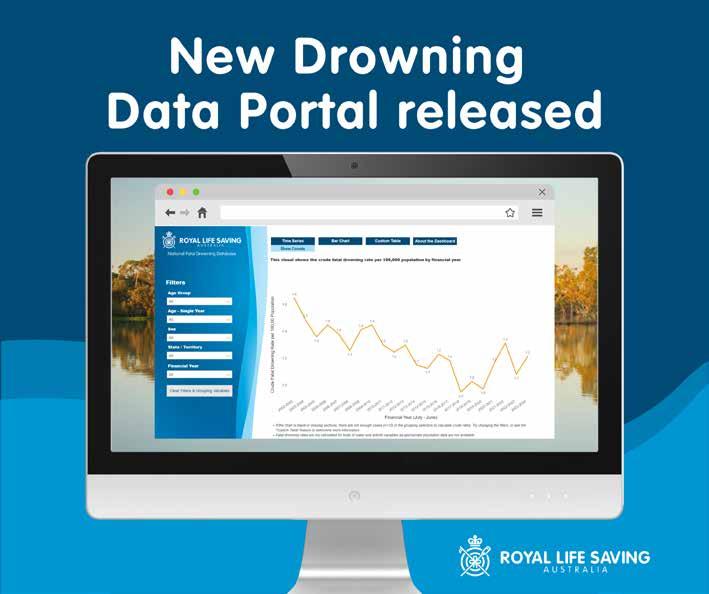
Royal Life Saving Australia released the updated report on Drowning Among Multicultural Communities in Australia, covering the period from 2013-14 to 2022-23. The report reveals that 933 people born overseas drowned in Australia during this time, averaging 93 drownings per year. The majority of these victims were residents, with the remainder consisting of international students, working holidaymakers and overseas visitors.
Consistent with overall drowning trends, males aged 25–34 years accounted for the highest number of drowning deaths among people born overseas. When calculating crude drowning rates per 100,000 residential population, the report found that people born overseas drowned at a higher rate than those born in Australia (1.28 compared to 0.93).
While not among the top countries for drowning deaths overall, the most recent five years (2018-19 to 2022-23) have seen increases in drowning deaths among people from Afghanistan, Iran and Sri Lanka.
This report highlights the need for targeted drowning prevention efforts within multicultural communities, focusing on high-risk groups and addressing cultural and linguistic barriers to water safety education.



people drowned in Australian waterways were born overseas
Bronte Haynes, a Masters student in Indigenous Health at the University of Wollongong, and Kathleen Clapham, in partnership with the Royal Life Saving Australia, led a research project that explored the critical importance of water to the health, safety and wellbeing of an Aboriginal community in Northwestern, NSW.
Using innovative arts-based methods, community mapping and yarning, Bronte’s research delved into the profound connection between the Aboriginal community in Brewarrina, Western NSW, and the Barwon River. By intertwining Indigenous ways of knowing, being and doing in the project, the study not only prioritised physical safety but upheld cultural heritage and respected the community’s intrinsic relationship with water.
The research provides invaluable insights into the deep bonds between the community and water, highlighting the necessity of preserving these connections for future generations.
The study produced seven key recommendations:
Respect for traditions and beliefs
Effective communication
Community engagement and empowerment
Leverage local knowledge
Cultural sensitivity and relevance
Preservation of cultural identity
Capacity building

2024
Scarr J-P, Meddings DR, Lukaszyk C, Vincenten JA, Rahman A, Wills S, et al. A framework for identifying opportunities for multisectoral action for drowning prevention in health and sustainable development agendas: a multimethod approach. BMJ Global Health. 2024;9(8):e016125. https://gh.bmj.com/ content/9/8/e016125
Peden AE, Scarr J, Doan Minh T, Latif R, Le Thi Anh D, Chong TL, et al. (2024) Drowning prevention challenges and opportunities: An exploratory study of perspectives of delegates from ASEAN nations. PLoS ONE 19(6): e0304138. https:// doi.org/10.1371/journal.pone.0304138
2023
Scarr J-P, and Jagnoor J. (2023) Conceptual definition for drowning prevention: a Delphi study. Injury Prevention 2023 Pages ip-2023-045085 https://injuryprevention.bmj.com/content/ injuryprev/early/2023/11/09/ip-2023-045085. full.pdf
Peden AE, Willcox-Pidgeon S, Scarr J-P, and Franklin RC (2023) Lessons learned through the 20-year development of a national fatal drowning database in Australia. BMC Public Health 2023 Vol. 23 Issue 1 Pages 1499 https://doi.org/10.1186/s12889-02316392-2
Willcox-Pidgeon S, Miller L, Leggat PA, Peden AE, Brander RW, Wilks J, et al. (2023). The characteristics of drowning among different types of international visitors to Australia and how this contributes to their drowning risk Australian and New Zealand Journal of Public Health 2023 Pages 100050 https:// www.sciencedirect.com/science/article/pii/ S1326020023046277
In December 2023, Royal Life Saving Australia and Surf Life Saving Australia co-hosted the World Conference on Drowning Prevention (WCDP) at the Perth Conference and Exhibition Centre, Western Australia, from 4–7 December 2023.
With the theme “Shaping Global Strategy and Mobilising for Action,” WCDP 2023 brought together more than 750 delegates from 50 countries who are experts in drowning prevention, lifesaving and water safety.
The conference came at a time of great momentum for global drowning prevention efforts, including:
• The United Nations General Assembly’s adoption of a Resolution on Global Drowning Prevention in 2021.
• The upcoming debate at the World Health Assembly on a draft resolution for Drowning Prevention.
• The World Health Organization (WHO)’s announcement of the development of the firstever Global Status Report on Drowning Prevention.
• WHO’s plans to establish a Global Partnership for Drowning Prevention in 2023.
The conference featured a diverse range of themes reflecting the challenges and opportunities in reducing drowning worldwide, including:
Life Stages and Populations
Swimming and Water Safety
Education
Aquatic Industry
Coastal Safety
Activities and Occupational Settings
Medical Treatment and Injury
Policy, Partnerships and Planning
Global Health and Development Agendas
Disaster and Climate Change
WCDP 2023 was a significant milestone in global drowning prevention efforts, reaffirming the need for international cooperation, equity and a youthcentered approach to achieve meaningful change.
Key Takeaways from the Conference Closing Statement:
1. Drowning prevention is multidisciplinary, multisectoral and larger than any single organisation or individual – it is essential to seize opportunities for collaboration, growth and collective impact.
2. Drowning prevention is an issue of equity – diverse voices must be prioritised, especially those most affected, historically marginalised or excluded. Different perspectives should be sought, and new, inclusive forms of leadership should be fostered.
3. The drowning burden disproportionately affects those under 25 years of age – future drowning prevention efforts must place children, adolescents and young people at the centre of decision-making. Youth must be included, listened to and empowered in all aspects of drowning prevention.

MORE wcdp2023.org

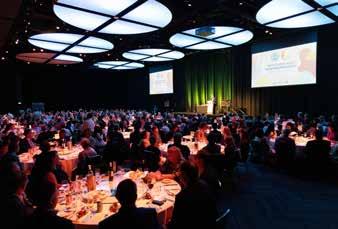

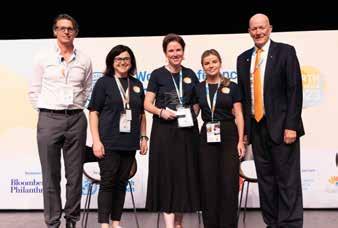



On World Drowning Prevention Day (25 July 2023) in Geneva, the World Health Organization (WHO) launched the Global Alliance for Drowning Prevention. United Nations (UN) members of the Global Alliance include WHO, the International Maritime Organization (IMO), the United Nations Development Programme (UNDP), the Food and Agriculture Organization (FAO), and UNICEF.
Royal Life Saving Australia joined other non-state actors, including the Royal National Lifeboat Institution UK (RNLI), the Centre for Injury Prevention and Research Bangladesh (CIPRB), the George Institute for Global Health (TGI), and Bloomberg Philanthropies. Each organisation brings an impressive track record of drowning prevention initiatives.
The Global Alliance for Drowning Prevention met on two occasions in its inaugural year:
1. The first meeting took place at the World Conference on Drowning Prevention 2023 in Perth. Members discussed the partnership and explored ways to accelerate drowning prevention efforts across UN agencies, governments and non-state actors. These discussions were shared with delegates during the conference.
2. The second meeting was held at the IMO in London in May 2024. This meeting focused on developing a strategic plan for the Global Alliance, which was released on World Drowning Prevention Day 2024. The plan outlines key areas for advocacy, capacity building and the development of a Global Strategy for Drowning Prevention.
The Global Alliance is a critical step toward unifying global efforts to reduce drowning, focusing on collaboration between state and non-state actors to create meaningful and lasting change.
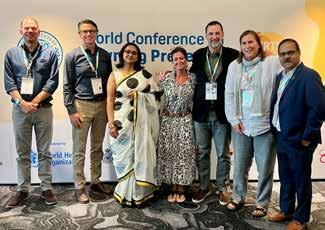
Throughout 2023-24, the World Health Organization (WHO) has been developing the Global Status Report on Drowning Prevention, which aims to map the context of drowning across more than 130 countries worldwide. This follows the release of similar regional reports for the Western Pacific and Southeast Asian regions. The Global Status Report is expected to provide significant new insights for countries in Africa, Central, and South America.
A key feature of the report will be its connection to the United Nations (2021) and World Health Assembly (2023) Resolutions on Drowning Prevention. WHO anticipates that the report will help countries align their investments and actions with the recommendations outlined in both resolutions. Findings will also include how many countries have developed national drowning prevention plans or have integrated swimming and water safety into their education curricula.
Royal Life Saving Australia is making a significant contribution to the development of the Global Status Report. The WHO working group includes Royal Life Saving Australia’s Chief Executive Officer Justin Scarr and Honorary Senior Research Fellow Dr Amy Peden, while National Manager Research and Policy Stacey Pidgeon acted as the data focal point, assisting WHO by compiling Australia’s response to the WHO questionnaire.
The WHO Global Status Report on Drowning Prevention is scheduled for release in December 2024.
Chief Executive Officer of Royal Life Saving Australia
Justin Scarr, in collaboration with colleagues from the World Health Organization (WHO), the George Institute for Global Health, Centre for Injury Prevention and Research Bangladesh, Royal National Lifeboat Institution and UNICEF, published a framework for identifying opportunities for multisectoral action in drowning prevention.
The framework was applied to United Nations agency members of the Global Alliance for drowning prevention, and solutions to drowning, particularly in low- and middle-income countries, will be delivered through partnerships with diverse sectors—many of which may not yet realise their potential impact on drowning prevention.
The framework outlines how successful partnerships can be achieved, which includes identifying:
Shared understandings of problems and solutions, such as a common focus on children.
Shared capacities, guidelines and resources, such as boating safety protocols.
Shared governance and strategic pathways, including regional working groups and existing plans, acknowledging that these factors often overlap.
A significant aspect of the framework is the Position, Add, Reach, and Reframe approach, which integrates drowning prevention into sustainable development agendas. While initially developed with the Sustainable Development Goals (SDGs) in mind, this approach is also highly relevant to local drowning prevention plans and partnerships.
VIEW JOURNAL
https://gh.bmj.com/content/9/8/e016125
International Women’s Day 2024 Webinar
On Wednesday, 6 March 2024, Royal Life Saving Australia hosted the Inspiring Inclusion Webinar in celebration of International Women’s Day.
Facilitated by Stacey Pidgeon National Manager – Research and Policy and William Koon National Manager – Drowning Prevention Strategy, Royal Life Saving Australia, the webinar brought together emerging leaders in drowning prevention from around the globe, each working towards reducing drowning in their communities. The webinar aimed to inspire and motivate participants by showcasing women’s experiences in different areas of drowning prevention. Discussions centred around the challenges and opportunities women face in the field, exploring the theme of #InspireInclusion and what it means for drowning prevention efforts. The conversation also focused on how we can meaningfully include women and girls at all levels of drowning prevention.
The webinar featured diverse perspectives and empowering stories, offering participants valuable insights and inspiration. Presenters included:
• Chezik Tsunoda, Filmmaker and Founder, No More Under, USA
• Kirsty Doig, Founder, Darcey Sunshine Foundation, South Africa
• Nahid Akther, Communications Manager, Centre for Injury Prevention and Research, Bangladesh
• Mariko Rooks, Epidemiologist, Loyola Marymount University, USA
• Pamela Simon, National Learning and Development Manager, Surf Life Saving Australia, Australia
• Dr Muthia Cenderadewi, University of Mataram, Indonesia and James Cook University, Australia
VIEW WEBINAR youtube.com/RoyalLifeSavingAust

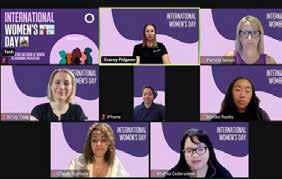
Developing individual and community resilience through advocacy, training and education with an emphasis on ensuring no-one misses out.
KEY ACHIEVEMENTS
Community awareness campaigns, including:
- Keep Watch
- Make the Right Call
- Everyone Enjoy the Water Safely
- National Water Safety Day
- Make Safe Decisions Around Water
- World Drowning Prevention Day
Educated and engaged the community about drowning prevention and water safety via the Royal Life Saving website and social media channels, with over 13 million impressions.
Reached more than 370,000 students via the Swim and Survive Program.
Launched Swim and Survive Locator.
4,465 schools/teachers registered for the Watersmart Program.
Celebrated 10 Years of Bronze e-Lifesaving Program.
Released the 7th Edition of the Swimming and Lifesaving Manual.
Trained more than 103,000 community members in First Aid and CPR.
Advanced Industry Safety and Workforce Development with the release of the Supervision Planning online module.
Fostered youth and community leadership at the Australian Pool Lifesaving Championships 2024 and Lifesaving World Championships 2024.


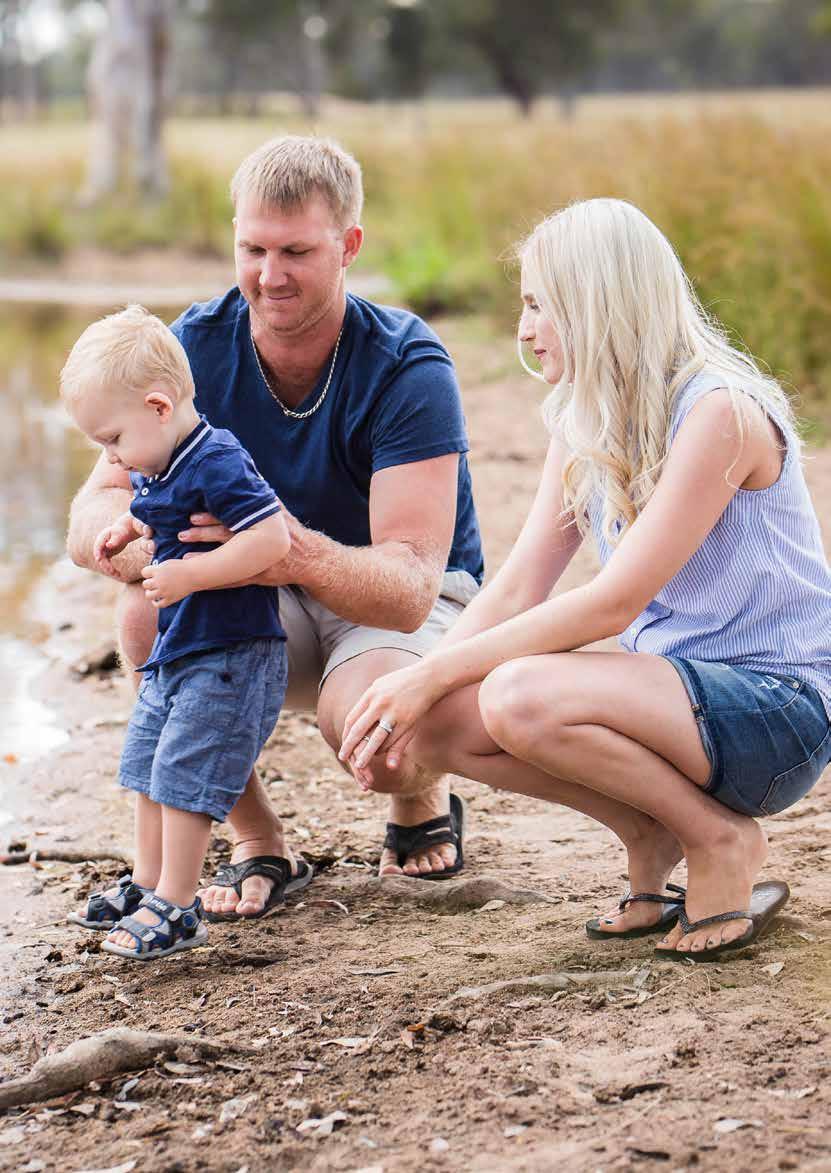
Royal Life Saving’s Keep Watch campaign launched in time for summer, reminding parents and carers of the serious risks of child drowning.
The Keep Watch campaign aims to prevent drowning among children aged 0–4 by encouraging parents and carers to follow four simple actions:
Supervise: Actively supervise children around water.
Restrict: Restrict children’s access to water.
Teach: Teach children basic water safety skills.
Respond: Learn how to respond in case of an emergency.
By promoting these actions, the campaign seeks to significantly reduce the risk of drowning among young children and create safer environments for families.
Research shows the drowning risk triples when children turn one. Children aged 0–4 years accounted for the highest number of swimming pool drowning deaths, with 222 one-year-olds having drowned in the past 20 years— representing 40 per cent of all child drownings under the age of five.
A range of resources have been developed to support the Keep Watch campaign, including television community service announcements and social media and website assets.
This year, additional resources were added to the campaign to highlight two new characteristics often seen in young children that can put them at risk around water.
“The Sidekick” who will follow their older siblings anywhere and won’t be left out of anything – even the water. The inquisitive nature of “The Curious One” means they get immersed in everything, which can lead them dangerously close to water.


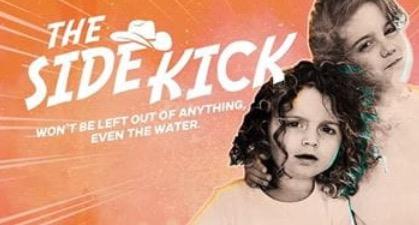
Visit: royallifesaving.com.au/keepwatch
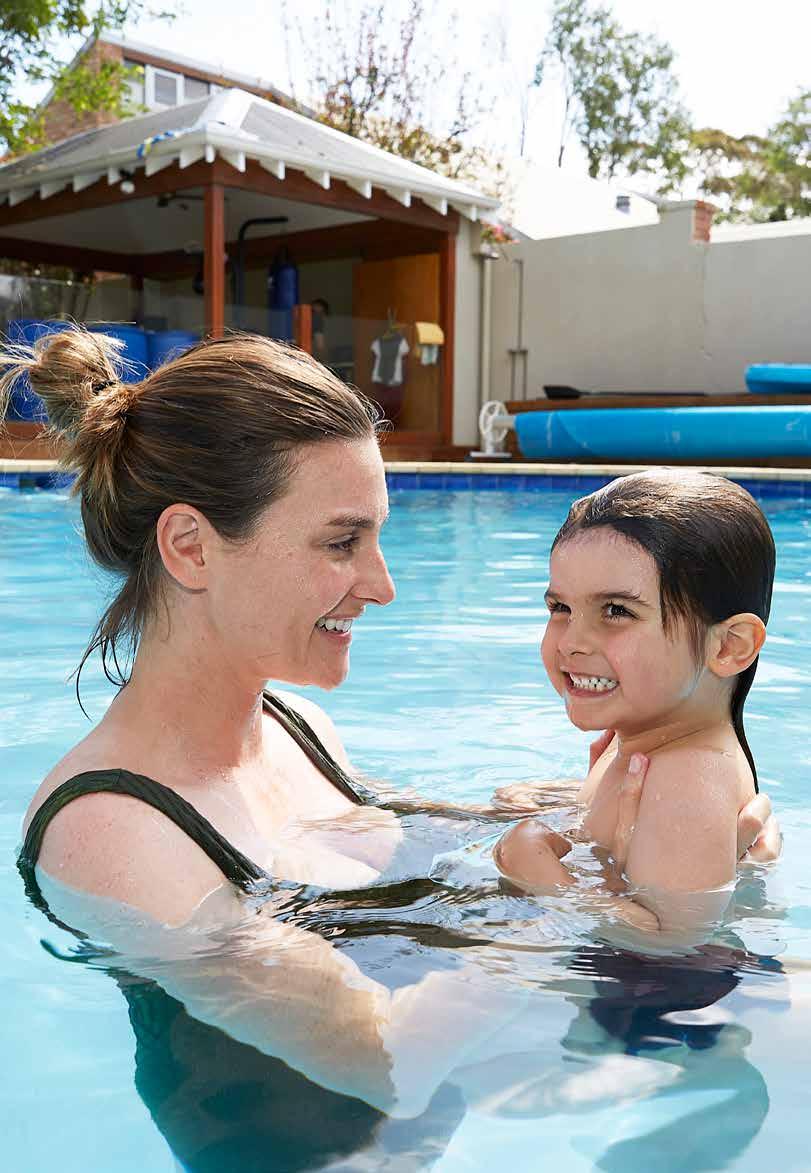

The Make the Right Call campaign encourages all Australians—particularly men—to look after their mates and keep each other safe when recreating in, on and around water.
The campaign advocates for a commonsense approach, asking men to “Make the Right Call” by implementing simple safety measures to protect themselves and their mates:
Avoid alcohol around water. Wear a lifejacket when on the water.
Avoid going alone around water.
CUMULATIVE REACH
20+ MILLION PEOPLE
By promoting these practical steps, the campaign aims to reduce the number of preventable drowning incidents and foster a culture of water safety among men.
With males accounting for 80 per cent of drowning deaths in Australia, the issue of men taking risks and overestimating their abilities remains one of the greatest challenges in drowning prevention. This campaign directly addresses these concerns by targeting men aged 25 to 45, raising awareness about the risks and consequences of their actions.
A variety of resources support the Make the Right Call campaign, including television and radio community service announcements, social media and website assets and digital display ads.
Australia Day Water Safety Warning
Ahead of Australia Day, Royal Life Saving issued a media release urging men to avoid taking risks around water, with the Summer Drowning Toll showing that males account for 84 per cent of all summer drowning deaths. Those aged between 18 and 64 are identified as the most at-risk group, with over a quarter (27 per cent) of these incidents occurring in rivers, creeks, lakes and dams.
In response to the alarming rise in drowning deaths, Royal Life Saving Chief Executive Officer Justin Scarr made a public appeal to young men to Make the Right Call.
“Given that drowning risks increase on public holidays, we ask men to make the right call and look after their mates, keeping each other safe around water, especially when swimming, boating and fishing over this long holiday weekend.”

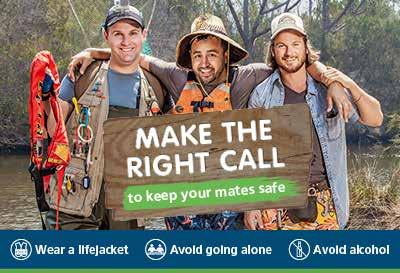
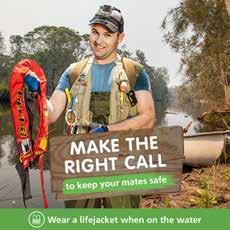
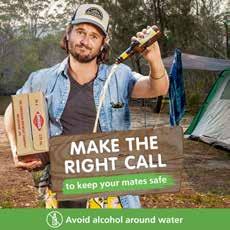
As a water-loving nation, being in and around water is part of our identity. Whether at rivers, swimming pools, harbours or beaches, Royal Life Saving is committed to ensuring everyone enjoys the water safely.
The Everyone Enjoy the Water Safely campaign is designed to complement existing water safety initiatives, specifically targeting families and communities aged 25 to 65 who engage in swimming and recreational activities during the summer and Easter periods. With a strong focus on regional areas, the campaign strategically targets high-risk locations and communities to promote water safety and reduce drowning incidents.
The campaign highlights a common-sense approach to drowning prevention and advocates simple safety tips to prevent drowning:
Know the conditions
Wear a lifejacket
Avoid going alone
Supervise children
Avoid alcohol around the water
A range of resources supported the campaign, including television and radio community service announcements, social media and website assets and digital display ads.
On Thursday 14 December 2023, Royal Life Saving launched the Everyone Enjoy the Water Safely campaign, accompanied by an urgent summer water safety warning. The campaign urged individuals to stay water safety conscious in, on and around the water during the summer break.
The launch underscored the sobering statistics from the previous summer (2022-23), during which 90 drowning deaths were recorded, with many more hospitalisations due to non-fatal drowning incidents.
Notably, 25 per cent of these fatalities occurred between Christmas and New Year’s Day, with 43% per cent of the victims aged 35 to 64. Additionally, 37 per cent of the drownings took place in inland waterways, while 51 per cent occurred along the coast—a reversal of the previous year’s trend.
NRMA Parks and Resorts and Gold Coast City Council shared the important water safety messages for Everyone Enjoy the Water Safely.
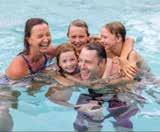
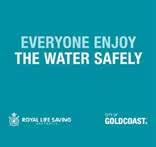

Australia’s population is growing, both in numbers and also the diversity of our people. Our diversity includes people from migrant refugee backgrounds, international students and overseas tourists. We want our diverse communities to enjoy and make the most of Australia’s beautiful waterways safely.
The ‘Keeping our community safe when swimming, fishing and boating’ campaign, now in its third year, aims to increase water safety among multicultural communities, promoting simple safety tips to prevent drowning when swimming, boating and fishing:
Don’t go alone
Always wear a lifejacket
Don’t drink alcohol
Always watch your children
Learn swimming and water safety skills
Over the past 10 years (2013-12 to 2022-23), 933 people drowned in Australia who were born overseas, totalling 36 per cent of total drowning deaths. The majority were residents, and 81 per cent were males, and 33 per cent were aged between 18 and 34 years.
Royal Life Saving is committed to supporting our diverse communities with water safety and swimming education that is culturally appropriate and accessible. We have developed resources in consultation and collaboration with different multicultural communities and leaders.
The campaign was translated into four new languages, promoted on 18 ethnic radio stations, shared on social media via culturally and linguistically diverse (CALD) private and public groups, and distributed to CALD peak stakeholders via eDM and to local councils, educational institutions and multicultural organisations.
Visual and audio resources are also freely available in 14 different languages in addition to English: Arabic, Bengali, Burmese, Dari, Farsi (Persian), Hazaragi, Hindi, Korean, Kurdish (Kurmanji), Nepali, Pashto, simplified Chinese, Swahili, Ukrainian and Vietnamese. Make


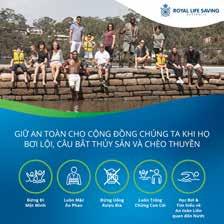
Anyone can drown, no one should WORLD DROWNING PREVENTION DAY
On Thursday 25 July 2023, Royal Life Saving Australia joined the World Health Organization to commemorate the United Nations World Drowning Prevention Day.
This day serves as a moment to remember those lost to drowning and to reinforce the message that “anyone can drown, but no one should.”
Globally, nearly a quarter of a million people die from drowning each year, including almost 82,000 children aged 1 to 14 years. In Australia, hundreds of families experience the tragedy of losing loved ones to drowning annually.
World Drowning Prevention Day offers everyone an opportunity to reflect on how they can protect themselves and those they care about from drowning.
To mark the day, Royal Life Saving Australia encouraged aquatic centres, swim schools, and community groups to support the initiative by going blue, sharing resources, sharing local stories, and joining the global movement to prevent drowning and promote water safety.





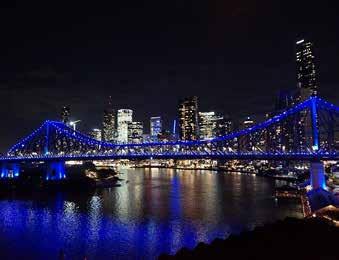
went blue, including the

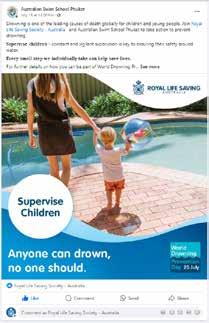


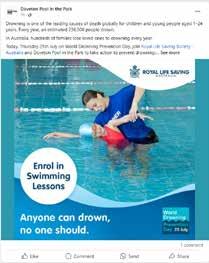

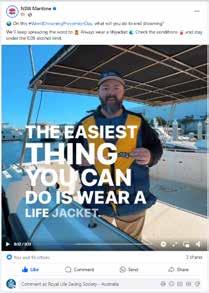





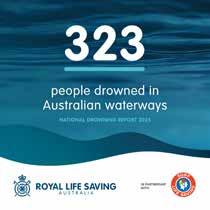

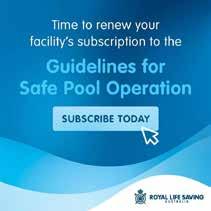
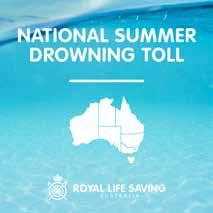
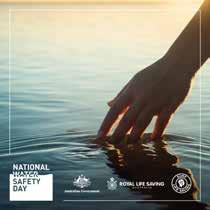
Swim and Survive Program
Reaching More Than 370,000 Students
For more than four decades, the Swim and Survive program has been a cornerstone of water safety education in Australia. Backed by over 125 years of lifesaving expertise, this program equips participants—ranging from six months old to adults— with the skills needed to live safe and active lives in, on and around water.
Swim and Survive goes beyond basic water safety; it empowers individuals to thrive in aquatic environments.
The program covers everything from basic swimming skills to personal survival, rescue techniques, and lifesaving skills. It’s designed to be fun, engaging, and progressive, keeping pace with the latest research to ensure participants stay safe and confident.
Aligned with the National Swimming and Water Safety Framework, Swim and Survive enables participants to reach National Benchmarks at key target ages. This comprehensive curriculum guides learners through a series of progressive steps, building from fundamental skills to more advanced techniques that challenge endurance and complexity.
One of the program’s greatest strengths is its inclusivity. Regardless of age, ability or experience, everyone can join in and learn essential water safety skills. The program is structured to be accessible to all, making sure no one is left behind in learning aquatic safety.
373,078 PARTICIPANTS
411,867
AWARDS
400+
PARTNERS
Swim and Survive Locator: Making It Easier to Find a Program
Finding a Swim and Survive provider is now more convenient with the launch of the new Swim and Survive Locator.
This tool allows individuals to search for providers by state and postcode, offering access to more than 400 locations across the country. The locator simplifies the search process, making it easier for families and individuals to find a nearby program and gain vital water safety skills.

Visit: swimandsurvive.com.au
Discover our program pillars that are the essence of Swim and Survive and encapsulates our program’s strength, quality and unique elements.
Water safety, swimming, survival and rescue are and always will be the key focus of our program
Research underpins the curriculum and informs evidencebased best practice for quality lessons
Aligned to the National Swimming and Water Safety Framework to achieve and exceed National Benchmarks
Inclusive for everyone to participate along the progression pathway towards health, fitness, sport or career outcomes
Our holistic program develops skills, knowledge, understanding, behaviours and attitudes to develop a safer swimmer
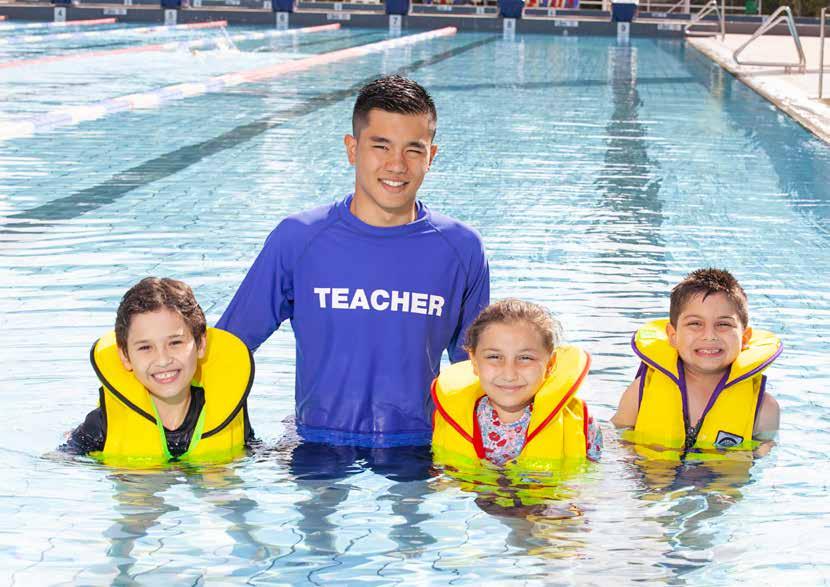
Royal Life Saving marked the 10th anniversary of the Bronze e-Lifesaving program, an innovative and free e-learning initiative that has educated nearly 100,000 students from 1,000 schools across the nation in essential water safety skills.
The Bronze e-Lifesaving program was developed 10 years ago with the goal of providing interactive and meaningful content that engages students while giving teachers the tools to facilitate water safety education.
The program integrates water safety education into the classroom, aligning with the Australian Curriculum for Health and Physical Education. Using aquatic themes, the program helps students understand risk-taking behaviours, develop informed decision-making skills, and build leadership qualities.
Drowning statistics indicate an increase in incidents from the age of 15 into young adulthood.
The Bronze e-Lifesaving program addresses this by teaching students survival skills, rescue techniques, and basic first aid and emergency care, equipping them to manage situations that may endanger their own or others’ safety around water.
Mercedes College in South Australia is one of many schools that has embraced the program over the past decade.
“We have implemented the Bronze E-Lifesaving online course at Mercedes College for the past 10 years for our Year 8 students. We have used this in the lead-up to our Year 8 Aquatics Camp and have found it relevant to the year level for water safety and risk-taking behaviours around water,” said Mercedes College Middle School Teacher Daniel Caire.
“We have also aligned this course with our First Aid unit, and the course has been a fun way to engage students through videos, real-life scenarios, and activities for them to complete as a class, in small groups or individually.
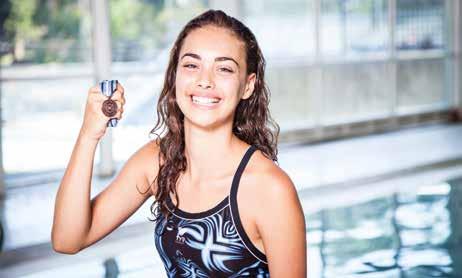

The students seem to really engage with the content, and the program provides teachers with discussion points and examples to use with their classes.”
Hale School Head of Health and Physical Education Kane Greenaway said that during COVID-19, the online program became a key learning tool for students at his school in Western Australia.
“We first began using the Bronze e-Lifesaving course through necessity during the COVID online learning period in 2020, and we were so impressed with the quality and interactive nature of the resource that we have since integrated its use into our Bronze Medallion course with our Year 10 students each year. The online modules that the students complete complement the practical component of the Bronze Medallion course,” said Mr Greenaway.
The Water Smart program aims to equip every child in Australia with essential ‘Water Smart’ skills, ensuring lifelong safety and enjoyment in aquatic sports and recreation. This classroom-based resource, designed for teachers and schools, includes the Water Smart Education Toolkit and the Water Smart Award Guide.
Water Smart Toolkit
The toolkit offers curriculum materials for all year levels, from Foundation to Year 10, and is available for download. These resources include:
• Units of work
• Teachers’ notes
• Activity sheets
• Safety tip sheets
• Supplementary resources
Water Smart Award Guide
A fun and practical water safety award that is easy for teachers to deliver in the classroom or playground. This guide, designed for students in Years 4, 5, and 6, provides step-by-step instructions for teachers and includes an achievement certificate. Key topics covered include:
• Dangers around aquatic environments and safe behaviours
• Reach and throw rescue techniques
• Basic resuscitation principles
Access to Water Smart Resources
The Water Smart Resources and Education Toolkit are available free of charge. Teachers can download the resources in PDF or interactive whiteboard format to teach a comprehensive unit on water safety.
4,465
SCHOOLS/TEACHERS REGISTERED
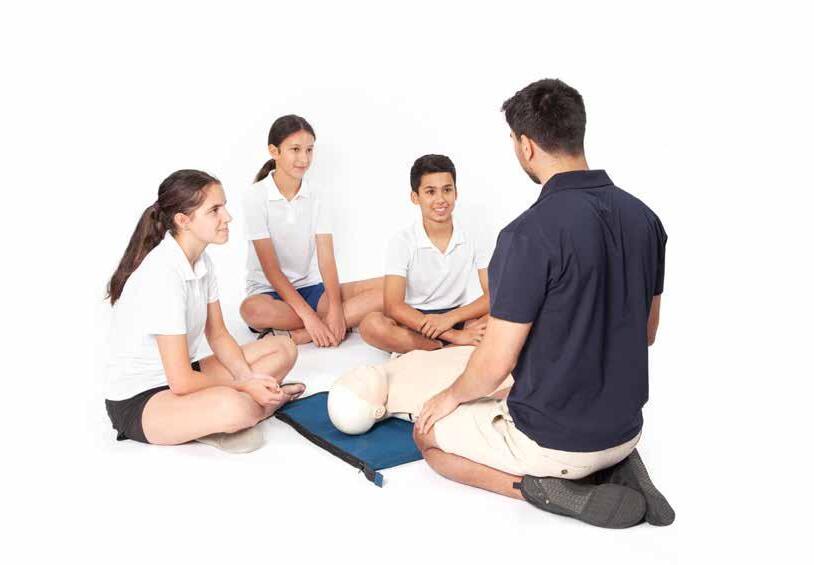
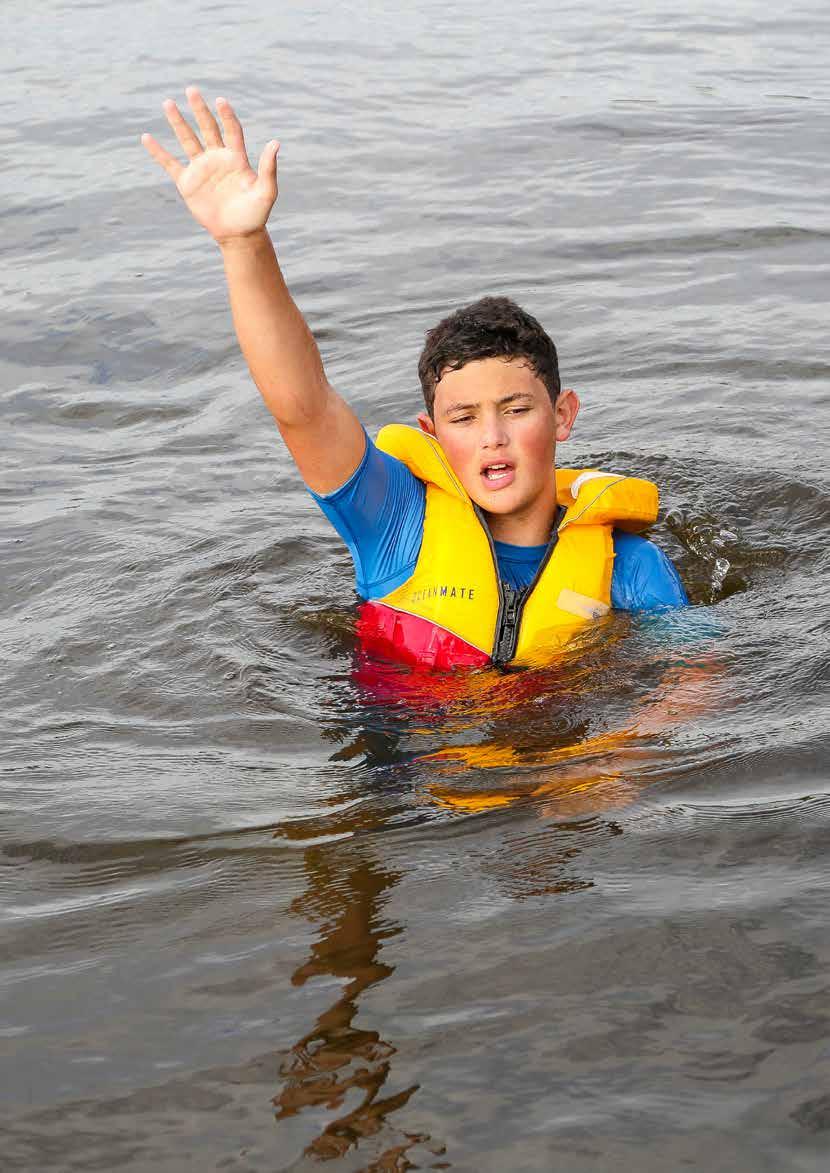

The Swimming & Lifesaving 7th Edition is the most comprehensive resource available for water safety education.
This publication is the preferred reference for teaching swimming and lifesaving, ideal for students pursuing awards such as the Bronze Medallion or anyone eager to learn about water safety.
The content covers essential water safety topics, including potential hazards and safety measures for various aquatic environments and activities.
It also provides detailed instruction on survival skills, swimming and survival strokes, lifesaving principles, rescue techniques, resuscitation and emergency care.
Available in both hard copy and eBook formats, this updated edition offers valuable resources for:
Teachers, trainers, and instructors: The manual serves as a practical instructional guide, offering prescriptive techniques as well as images and diagrams to support the teaching of swimming, lifesaving programs, and awards.
Lifesaving participants:
The resource provides critical knowledge on the skills required to earn community lifesaving awards such as the Bronze Star and Bronze Medallion. The manual is also used to assess participants’ understanding of the theoretical aspects of these awards.
General community members:
For those interested in learning more about water safety, lifesaving, resuscitation, and emergency care, this publication is an accessible and informative resource.
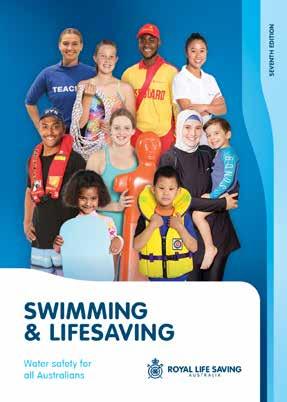
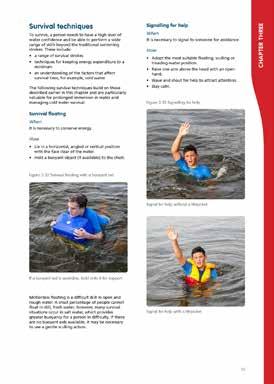


Royal Life Saving Australia offers extensive training opportunities, both online and inperson, to support individuals in building lifesaving skills for community safety or a professional career in aquatic safety.
Since 1894, we have trained people to be lifesavers, adapting our programs to meet the needs of diverse workplaces and communities today.
Our core training programs include:
First Aid
Cardiopulmonary Resuscitation (CPR)
Pool Lifeguard
Bronze Medallion
Swim Teaching
Professional Development for the Aquatic Industry
We also offer a suite of professional development courses tailored for the aquatic industry, designed to help participants advance their careers:
• Supervision Planning
• Lifeguard Advanced Supervision Skills
• Teacher of Lifesaving
• Conflict Management
• Swim Teaching for Participants on the Autism Spectrum
• Cultural Competence
• Child Safety
• Communication Skills
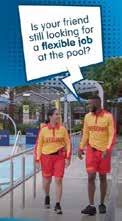

Training and Workforce Development Committee
Strengthening Training, Advocacy and Industry Standards
This year marked significant progress in enhancing training accessibility, ensuring compliance and advocating for workforce needs within the aquatic sector:
Lifeguard Training Modernisation:
Launched an eBook version of the Lifeguard Manual for training courses, enhancing accessibility and convenience.
Bimonthly Committee Engagement:
Held regular meetings to foster information exchange, share expertise and collaborate on problem-solving.
Training Resource Development:
Coordinated creation of resources for multiple training programs, including Bronze Medallion, Pool Lifeguard, Swim Teacher, First Aid, Aquatic Technical Operator, and Certificate II, III and IV in Sport, Aquatics and Recreation.
RTO Compliance Activities:
Conducted assessment validation and aXcelerate system workshops to ensure regulatory compliance.
Leadership in Skills Council:
As a founding member of HumanAbility, actively participated in the Jobs and Skills Council for sport, aquatics and recreation, and served on the Sport and Recreation Industry Advisory Committee.
National Representation:
Had a strong presence at HumanAbility events across Australia, contributing to various projects and initiatives.
Government Advocacy:
Submitted proposals to improve the Skills Priority List and ANZSCO job classifications for aquatic industry roles.
Promotion and Recruitment:
Engaged in promotional activities to support recruitment for lifeguards and swim teachers, emphasising training programs and job opportunities in the industry.
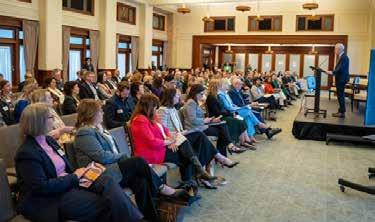
Training Awards Issued
69,132 RESUSCITATION
34,136 FIRST AID
19,822 POOL LIFEGUARD
8,057 SWIM TEACHER
3,938 PROFESSIONAL DEVELOPMENT
3,433 BRONZE MEDALLION (VET)
Launch of the ‘Supervision Planning’ Online Module
As part of Royal Life Saving’s ongoing efforts to develop, enhance and strengthen the national aquatic industry workforce and raise the safety standards across the aquatic sector, the ‘Supervision Planning’ online module was introduced to Royal Life Saving’s growing portfolio of online learning tools.
The module addresses the complexities of supervision planning, covering factors such as facility design, environmental conditions, available resources, swimmer demographics and the variety of activities hosted at the facility.
It integrates supervision planning into a broader safety management system, identifying potential vulnerabilities by considering all relevant elements.
Created for facility managers, operational leaders, duty managers and experienced pool lifeguards, it provides practical scenarios and assessments based on the Guidelines for Safe Pool Operations (GSPO) – Aquatic Supervision Planning section and guides users through the critical processes and components needed to develop a tailored supervision plan for their facility.
LEARN MORE royallifesaving.com.au/supervisionplanning

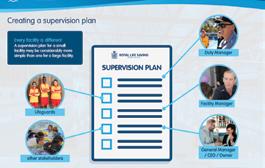
After three days of intense competition at the Melbourne Sports and Aquatic Centre, the Western Australia State Team were crowned champions of the Royal Life Saving Australian Pool Lifesaving Championships 2024 (APLC24).
Western Australia triumphed over strong competition from the Victorian and New South Wales State Teams, securing both the Interstate Overall Championship and the prestigious Sir Percy Joske Trophy. This victory marks a historic moment for Western Australia, who last claimed the title 22 years ago, in 2002.
Other highlights for the Western Australian State Team included:
Interstate Under 16 Championship
Queensland Trophy (1st Place)
Interstate Open Championship
Phillip Gorey Trophy (1st Place)
Interstate Men’s Overall Championship
London Trophy (1st Place)
Pool lifesaving is one of the three core disciplines that make up the sport of lifesaving internationally. In addition to ocean and beach disciplines, more commonly known as surf lifesaving, pool lifesaving tests swimming, rescue skills and initiative in a still-water environment.
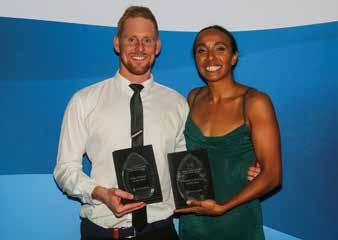
It was Jake’s third Lifesaver of the Meet honour in a row, also taking home the award in 2022 and 2023. Jake was also awarded the Men’s Open Individual Championship Trenchard Miller Trophy.
Mariah Jones was also awarded the Women’s Open Individual Overall Championship – Soden Shield and the Women’s Open Australia Cup – Julie Ann Lamont Memorial Trophy.
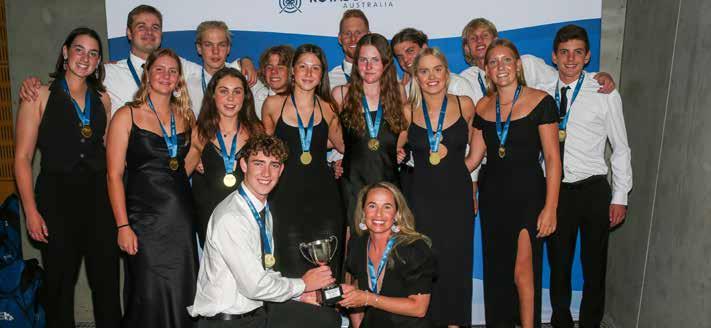
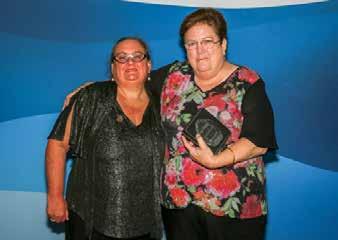
Cathy Hynd from New South Wales was awarded Official of the Meet by Chief Referee Joanne Teagle
Chief Referee Jo Teagle awarded Cathy Hynd Official of the Meet for her role at the event. “Cathy is a quiet achiever, nothing is too much trouble, and she is a safe pair of hands who can be relied on without conditions to ensure the accuracy of results.”
The Pool Lifesaving Championships wouldn’t be possible without the volunteers who ensure the event runs smoothly. Whether it’s timekeeping, judging, or providing assistance to the teams, every volunteer gives their all during the Championships. We recognise the early starts, late nights and intense days and thank all the officials for their support.
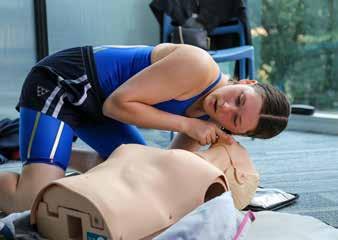
The CPR competition is an integral part of the APLC24 and highlights the outstanding ability of our competitors to perform efficient and effective CPR in an aquatic environment. This event is a test of resuscitation on an assumed drowning patient using CPR training manikins. Judges are provided with live data on the competitors’ performance throughout the test using Laerdal’s Little Anne QCPR manikins and Skill Reporter technology.
Laerdal CPR Trophy
First: Victoria State Team
Second: Victoria Development
Third: New South Wales State Team
CPR Encouragement Award: Engadine Lifesaving Club
The support of Laerdal as the CPR competition sponsor is greatly appreciated.

Supported by Sport Australia and in partnership with Surf Life Saving Australia, the Australian Lifesaving Team is the high-performance pathway for lifesaving sport in Australia.
The Australian Lifesaving Team is comprised of three squads - Youth, Pathway and Open, with top-performing athletes in each discipline (pool, open water/craft and beach) selected to contest the biennial World Lifesaving Championships and other national team competitions within the two-year Lifesaving World Championship campaign.
Australia’s National Teams make history as combined Open and Youth back-to-back Lifesaving World Champions 2024.
After five intense days of competition across pool, beach and ocean events, Australia triumphed, edging out their Trans-Tasman rivals, New Zealand, to secure the overall points to be named Lifesaving World Champions. New Zealand finished in second place in both categories.
Having co-captained a winning team at home, Mariah Jones said it was an experience she will never forget.
“Captaining a winning team is amazing – I’m so stoked about it,” she said. “Everyone’s got their families here, everyone’s got their friends here.”
For Jones and co-captain Jake Smith, the moment was all the more special, having been part of the Australian Lifesaving Team for nearly a decade.
“[Jake and I] are so proud to be on a winning campaign and also captaining it,” said Jones. “Our first big competition [together] was World Games in 2017, then we’ve done World Champs since – this is the third one for us – it’s great being in the team and especially with him and everyone else as well.
Jones also paid tribute to all team newcomers, including Lana Rogers, who earned her first national cap.
Jake Smith echoed Jones’ comments, reflecting on the months from team selection to lifting the trophy at Kurrawa.
“As a team, it’s been an unreal journey, and the people that are a part of it are the best of the best, and they’re sensational human beings as well, which makes the whole experience that much better,” he said. “To finally be on Oz soil at the home of lifesaving here in Queensland, it’s an unreal feeling.”
National Teams
Overall Point Scores
Open: Australia 907
New Zealand 873 France 629
Youth: Australia 973
New Zealand 774 France 759
We extend our heartfelt thanks to the dedicated volunteers and officials who made the Lifesaving World Championships 2024 possible.
Their commitment and hard work behind the scenes ensured the event ran smoothly.
Australian Officials
Anni Gardiner
Barbara Morgan OAM
Betty Sheret
Brione Rundle
Carolyn Wilson
Daryl Griffin
Floss Roberts
Frank Ruddiman
Geoff Grey
Graham Rice
Jaci Baxter
Jo Teagle
John Winch
Karen Locke
Marni Black
Mary Collins
Norm Stanley
Pam Stanley
Penny Hodgers
Roz Gray OAM
Sandra Madeley
Dr Shayne Baker OAM
Sue Baxter-Winch
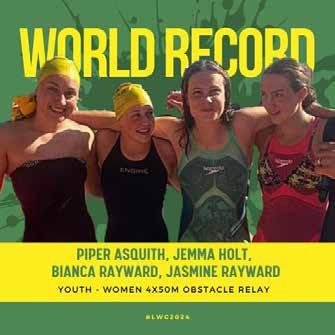
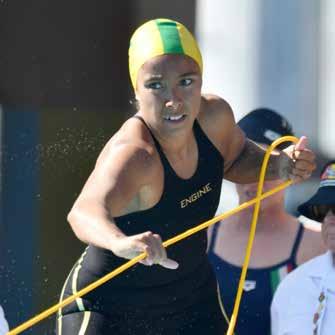
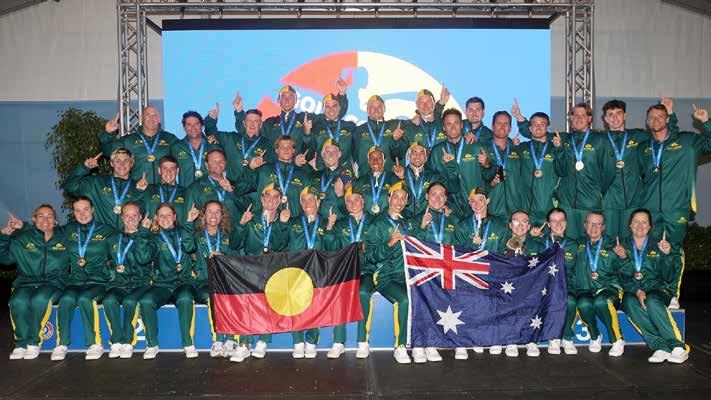


Championing safety in all aquatic environments through collaboration, partnerships, risk management, and designing safety systems.
835 facilities maintained active subscriptions to the Guidelines for Safe Pool Operations.
734 Aquatic Safety Partner facilities.
690 Safety / Risk Assessments completed.
Released the Safe Places to Swim: State of Industry Safety Report 2023-24.
Facilitated the National Aquatic Industry Committee
- Advancing Aquatic Safety and Sustainability.
Hosted the National Workforce Symposium.
Launched the National Aquatic Workforce Framework.
Supported the National Sports and Physical Convention and Emerging Leaders Scholarship Program.
Facilitated Local Water Safety Plans, including Riverland and Townsville Water Safety Strategies.
Revitalising Pools and Enhancing Safety with partners Myrtha and Lynxight.
Launched the Inland Waterway Guidelines. Delivered on the Respect the River Program engaging Regional, Remote and Inland Communities.



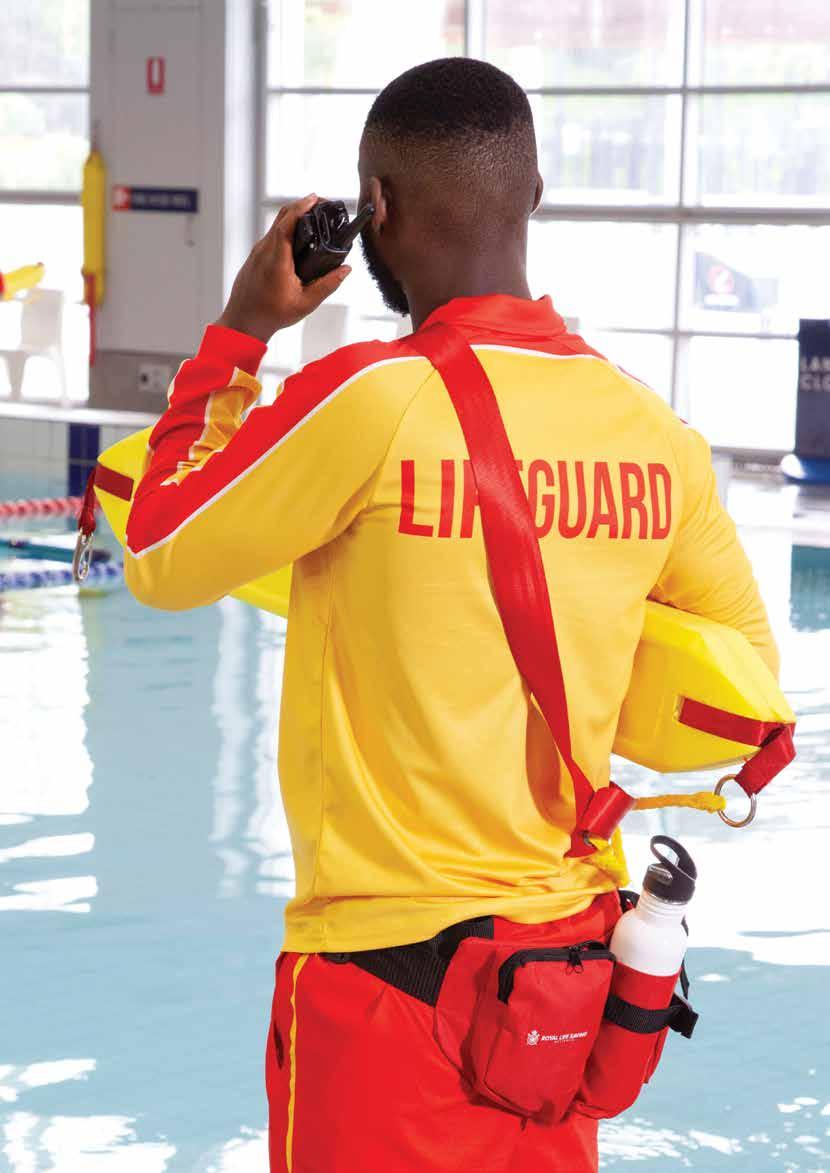
Royal Life Saving’s Aquatic Risk teams played a pivotal role in promoting best practice and driving improvements in aquatic risk management and safety with:
Routine Safety Assessments
Encouraging facilities to conduct regular assessments to benchmark safety practices against national standards.
Design Phase Assessments
Advocating for safety assessments during the planning and design of new facilities.
Child Supervision Programs
Expanding child supervision initiatives at public and communal pools.
835
SUBSCRIBERS TO THE GUIDELINES FOR SAFE POOL OPERATIONS
734
AQUATIC SAFETY PARTNER FACILITIES
690
SAFETY / RISK ASSESSMENTS COMPLETED
Key achievements of 2023-24: Guidelines for Safe Pool Operations
The Guidelines for Safe Pool Operations (GSPO) continued to serve as the national industry standard, offering essential guidance on the safe design, ownership and operation of aquatic facilities.
This year, 835 facilities maintained active subscriptions, reinforcing their commitment to upholding safety excellence.
Aquatic Facility Safety Assessments
The Aquatic Facility Safety Assessments (AFSA) program remains a cornerstone of our risk management strategy, providing comprehensive evaluations of facility safety and compliance and enabling industry-wide benchmarking of safety standards’ implementation.
Safety Assessments Conducted:
• Public Pools: 302
• Commercial Swim Schools: 6
• Communal Pools (hotels, resorts, apartments): 35
• Mystery Guest Visit Assessments: 314
• Inland Waterway Safety Assessments: 33
Aquatic Facility Safety Endorsements
Royal Life Saving recognises facilities that excel in safety and risk management through its various program endorsements. These endorsements are widely regarded as a hallmark of safety excellence within the aquatic industry:
• 5 Star Pools (NSW/ACT/TAS): 67
• Platinum Pools (VIC/QLD): 45
• Gold Pools (VIC/QLD/SA): 74
• Silver Pools (VIC/QLD/SA): 53
• Bronze Pools (VIC/QLD/SA): 30
• Keep Watch @ Public Pools Partners (NT/QLD/NSW/TAS): 96
• Watch Around Water Partners (VIC/WA): 369
Aquatic Risk Committee
The Aquatic Risk Committee supported initiatives through strategic oversight and policy development.
Key Activities for 2023-24:
• Developed Guidelines for Inland Waterway Safety.
• Streamlined, updated and enhanced the National Aquatic Safety Assessment System and question sets in line with updated standards and guidelines.
• Provided guidance on emerging safety concerns, including ice bath usage and home pool safety barriers.
• Contributed to the Safe Places to Swim: State of the National Aquatic Industry Report.
Visit: royallifesaving.com.au/Aquatic-Risk-and-Guidelines
Royal Life Saving Australia released the Safe Places to Swim: State of the National Aquatic Industry Report, providing a comprehensive analysis of safety performance and incident data across Australia’s aquatic sector.
Public Pool Incident Data:
• 6 drowning deaths.
• 18 non-fatal drownings.
• 7,879 rescues and near misses.
Safety Findings:
• 37 per cent of publicly accessible aquatic facilities held a current GSPO subscription.
• 360 facilities (14.5 per cent of all aquatic facilities) underwent a recognised safety assessment.
• The national average safety assessment score was 79 per cent.
High-Performing Areas:
• Work health and safety compliance.
• Lap and leisure pool design.
Areas for Improvement:
• Training and qualifications compliance.
• Emergency management readiness.
• Aquatic supervision.
Key Recommendations:
Improvements to how the industry identifies risk and benchmarks safety conformance against standards, guidelines and regulatory frameworks, by ensuring facilities undertake routine Royal Life Saving recognised safety assessments. Increased programs and incentives for pool owners and operators to undertake assessments.
Ensuring facilities are designed in compliance with guidelines, standards and regulatory frameworks from the outset by completing a Royal Life Saving recognised safety assessment during the design phase.
Ensuring child supervision programs are in place at all publicly accessible pools and communal pools.
Ensuring staff training and qualifications systems are further professionalised and aligned nationally.
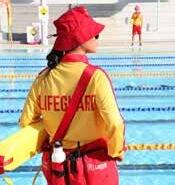


The National Aquatic Industry Committee (NAIC) has been instrumental in advancing key initiatives to support the health, safety and sustainability of aquatic facilities across Australia throughout 2023-24. Through its collaborative efforts, the NAIC plays a vital role in shaping the future of aquatic facility management, safety protocols and workforce development within the aquatic sector.
This year, two critical guidelines were developed and released as part of the Guidelines for Safe Pool Operations (GSPO):
• Child Safety in Aquatic Facilities: This guideline provides actionable steps for aquatic facilities to implement national child safety standards, ensuring the safeguarding of children and young people in aquatic environments.
• Training and Qualifications: This guideline supports facility owners and operators in adopting updates to Vocational Training and Education (VET) sector training packages, outlining the necessary entry-level qualifications for staff to maintain a professional and competent workforce.
In March 2024, the National Aquatic Workforce Symposium brought together stakeholders across the aquatics ecosystem to address ongoing workforce challenges. The symposium saw the finalisation of the National Aquatic Workforce Framework, which outlines career pathways in aquatic facilities and emphasises the importance of safety, ongoing learning, professional development, and the broader capabilities required for success in the sector.
NAIC members contributed to the Aquatic and Leisure Facility Management stream at the National Sports and Physical Activity Convention, a platform supported by Royal Life Saving Australia. This collaboration fostered knowledge sharing across the sport, recreation and aquatic sectors, promoting innovation and the elevation of standards within the industry.
NAIC members provided data and insights for the 2023 State of Safety in Aquatic Facilities Report, reviewing key components prior to publication. This comprehensive report highlights current safety practices and areas for improvement in aquatic facilities, serving as a crucial tool for guiding future safety initiatives and elevating operational standards across the industry.
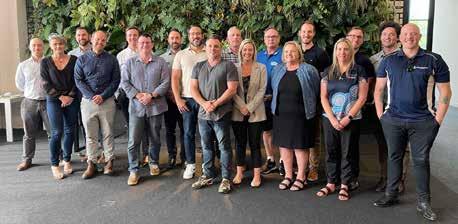
National Aquatic Industry Committee
RJ Houston (Chair)
Royal Life Saving Australia
Matthew Simpson
Swimming Australia
Georgie Nichol
Australian Council for Swimming and Water Safety Teachers (AUSTSWIM)
Gary Toner
Australian Swim Coaches and Teachers Association (ASCTA)
Wayne Pollock
Australian Swim Schools
Association (ASSA)
Kathy Parton
Aquatics and Recreation (ARV)
Stan Wall
Aquatic Recreation Institute (ARI)
Steve Good
Leisure Institute of Western Australia Aquatics (LIWA)
Lindsay McGrath
Swimming Pool and Spa
Association Australia (SPASA)
Amanda Locke
City of Greater Geelong, VIC
Brad Page
Logan City Council, QLD
Matt Howes
Sunshine Coast Council, QLD
Liam O’Brien
Aligned Leisure
Joel Perricone
Bluefit
Liz Van Devente
Belgravia Leisure
Adam Luscombe
The Y
Alek Olszewski
Life Saving Victoria
Nicky Sloan
Royal Life Saving Queensland
Craig Roberts
Royal Life Saving New South Wales
Bec Gawne
Royal Life Saving Northern Territory
On 12-13 March 2024, Royal Life Saving hosted the National Workforce Symposium in Melbourne, bringing together 50 industry leaders to review, rethink and reimagine a future-focused National Aquatic Workforce Framework.
The Symposium’s goal was to ensure that every community across Australia has access to safe places to swim, supported by a workforce that is safe, capable, sustainable and strengthened.
With a strong commitment to collaboration, significant strides were made toward developing a robust framework that not only enhances safety and operational assurance but also elevates the profile of the aquatic industry. By highlighting diverse career pathways and opportunities, the framework aims to attract and retain talent, further securing the future of the sector.
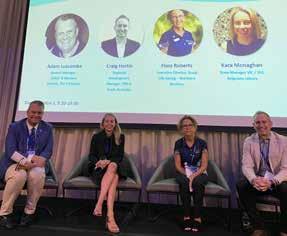
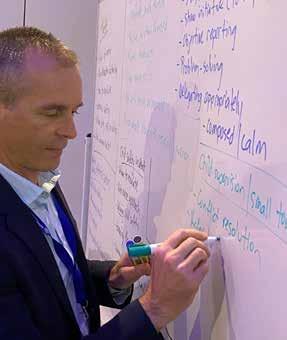
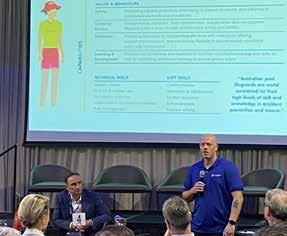
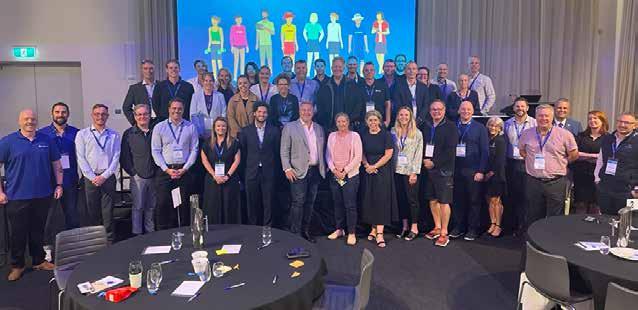
Strengthening
Following the success of the National Workforce Symposium, Royal Life Saving Australia, on behalf of the National Aquatic Industry Committee, proudly launched the first edition of the National Aquatic Workforce Framework.
This Framework aligns with the goals of the Australian Water Safety Strategy 2030, which emphasises the need to spotlight aquatic careers, advocate for development pathways, and reinforce systems that strengthen the capability and professionalism of the sector—particularly in relation to safeguarding community safety.
The creation of this Framework represents the culmination of extensive research, workshops and consultations and is a comprehensive blueprint designed to enhance workforce capabilities, elevate safety standards and foster professional development within the aquatic sector.
The National Aquatic Workforce Framework expands the concept of workforce capability beyond traditional technical competencies, typically the focus of vocational education and training (VET) sector qualifications. Instead, it integrates technical skills with essential soft skills and business performance capabilities, ensuring these elements work together to maximise the positive impact on community safety and wellbeing.
In addition, the Framework supports developmental and career pathways, emphasising the importance of skills progression and continuous learning to maintain a sustainable and effective aquatic workforce.


On 27-28 June, the National Sports and Physical Activity Convention (NSC) IAKS 2024 was held at the Melbourne Convention and Exhibition Centre. Royal Life Saving Australia proudly supported the event by facilitating the aquatic leisure management stream, focusing on critical trends and practices within the sector. Key topics included sustainable and inclusive practices, youth engagement and environmental stewardship, emphasising the need to diversify both the user base and workforce in order to enhance community wellbeing.
This workshop addressed the urgent need for sustainable practices within aquatic facilities, highlighting the importance of adopting renewable energy sources and implementing programs to reduce the industry’s ecological footprint.
The discussion in this workshop was focused on the continued development of the aquatic industry workforce. Topics included streamlining professional accreditation schemes and ensuring the provision of safe environments for all patrons. These measures are essential to maximising the social value of aquatic facilities.
A major highlight was the debate on the merits of outsourcing versus insourcing management models for public aquatic facilities. A panel of industry experts and local government executives provided valuable insights into the advantages and challenges of each approach, offering perspectives that were highly relevant for stakeholders in the sector.
Scholarship Program Supporting Emerging Leaders in the Aquatic Industry
Ten emerging leaders from the national aquatic industry were awarded scholarships by Royal Life Saving Australia and the NSC to attend the 2024 convention. These scholars were carefully selected based on their career achievements, endorsements from key stakeholders, and vision for applying the knowledge and networks gained at the event.
Royal Life Saving Australia’s Chief Executive Officer Justin Scarr emphasised the importance of supporting the next generation of leaders in the aquatic industry and lifesaving:
“We are excited to contribute to the development of a new generation of drowning prevention leaders through this scholarship. The award provides recipients with the opportunity to attend a global convention, equipping them with the tools and connections necessary to drive meaningful change in the aquatic industry.”
LEARN MORE FROM THE EMERGING LEADERS AND THEIR KEY TAKEAWAYS FROM THE CONVENTION royallifesaving.com.au/ national-sports-and-physicalactivity-convention
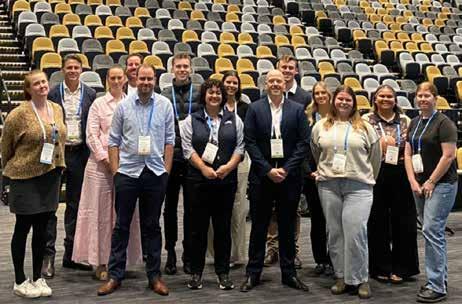
Communities working together to create safer aquatic environments
A core theme of the Australian Water Safety Strategy 2030 is the development of a Local Water Safety Plan for every community.
These plans serve to outline both current and future community-based drowning prevention actions tailored to the specific needs and contexts of individual communities. The approach emphasises evidence-based solutions, multisectoral collaboration and consideration of the varying capabilities and needs of stakeholders, including community and government organisations, as well as vulnerable groups.
By implementing Local Water Safety Plans, communities can take a leadership role in addressing drowning prevention, working together to create safer aquatic environments for everyone.
Royal Life Saving has been actively supporting the development of these plans across the country, ensuring tailored approaches to water safety that address the unique needs of each region.
LEARN MORE ABOUT LOCAL WATER SAFETY PLANS royallifesaving.com.au/localwatersafetyplans

Key benefits of developing Local Water Safety Plans: Prevent future drownings and save lives.
Provide leadership on a crucial social, health and economic issue.
Reduce the negative social, health and economic impacts of drowning in the community.
Collect and utilise local data and research to better understand drowning risks and factors.
Profile and analyse local drowning issues and risk factors.
Foster a common understanding of water safety challenges unique to the region.
Build stronger ties with community groups and relevant agencies.
Highlight key research and data relevant to the area for stakeholders with water safety responsibilities.
Support collaborative efforts to create a collective strategy for the region.
Develop evidence-based solutions that contribute to a comprehensive local drowning prevention plan.
Align with international and national frameworks to demonstrate proactive drowning prevention actions.
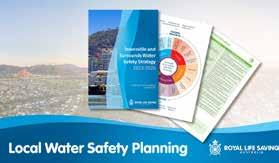
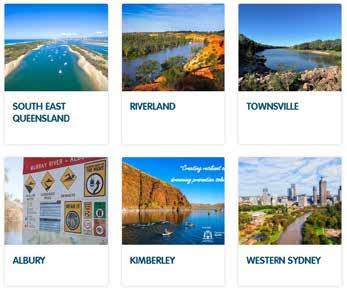
Royal Life Saving research has identified the Murray River as Australia’s number one drowning blackspot. Tragically, between July 2002 and June 2023:
17 people drowned in the Riverland region, 16 of whom drowned in the Murray River.
47 per cent of victims were within five kilometres of their homes when they drowned.
29 per cent were aged between 18 and 34 years old. All victims were male.
In May 2024, stakeholders gathered in Renmark to codesign the Riverland Water Safety Strategy, reinforcing a collective commitment to prevent drowning in the region. The workshop brought together representatives from government, local councils, lifesaving organisations, emergency services, ambulance, police, water corporations, aquatic facilities and holiday parks.
This strategy underscores a coordinated approach to addressing the region’s significant drowning risks, with a strong focus on collaboration, education and advocacy.
The key goals of the Riverland Water Safety Strategy include:
Ongoing Collaboration: Strengthening and expanding the River Murray Safety Working Group to ensure continuous support for cooperative water safety efforts.
Swimming and Water Safety Skills: Enhancing and supporting programs that teach essential water safety skills, ensuring equitable access for all members of the community.
Joint Campaigns and Messaging: Collaborating to design and disseminate educational materials and safety messages with a unified voice, maximising the impact on water safety awareness.
State Policy Engagement: Advocating for increased marine compliance resources for the Riverland and supporting aquatic facility infrastructure to promote safer environments.
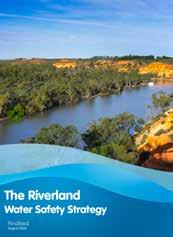
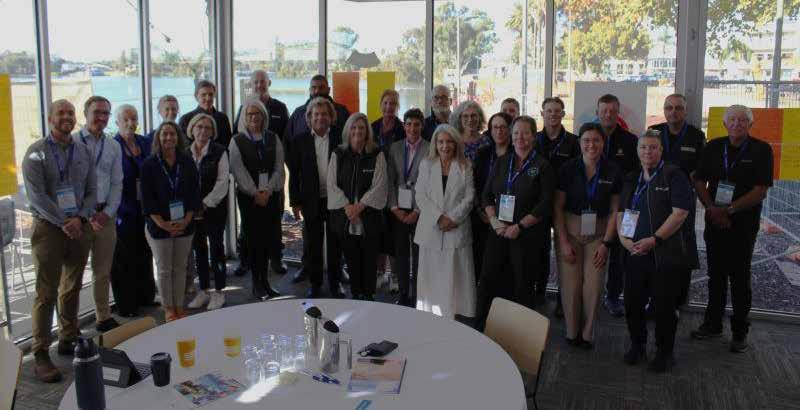
Two years after the launch of the Townsville Water Safety Strategy, a multisectoral group of drowning prevention advocates reconvened to assess progress on key activities, address region-specific water safety issues and plan for future collaboration. The meeting, hosted by the Townsville City Council at the Ried Park Precinct, was facilitated by Royal Life Saving Australia.
The group discussed critical issues for the region from multiple perspectives, including:
• Lack of parental supervision at aquatic facilities and beaches creating ongoing challenges for lifeguards.
• Increased snorkeler numbers at Alma Bay, many of whom are unfamiliar with the area and have limited water skills.
• Introduction of new marine safety services with roving jet ski patrols to cover additional areas.
• Reflections on the impact of Tropical Cyclone Kirrily and other weather events, particularly related to flooding.
• Research and responses to marine envenomation events.
• Safety at hotels, motels and shortterm rentals, focusing on issues related to alcohol consumption and the suitability of vacation properties to host children.
• Dam safety, including the regulation of large dams, emergency action plans and safety communications for dams on private property.
• The need for ongoing prevention efforts in partnership with tour operators, moving beyond reactive measures when incidents occur.
• Financial pressures leading families to forgo swim lessons, raising concerns about children not learning essential water safety skills.
• Swim lesson operators incorporating more water safetyfocused material for participants and parents.
• Gaps between metro and regional areas in access to swim lessons, water safety education, aquatic facilities and lifeguard training.
• Workforce shortages for lifeguards and swim teachers.
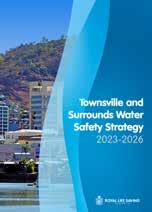
In prioritising key focus areas from the strategy, the group identified the following as critical:
Supporting regional and remote communities.
Addressing alcohol use around water.
Engaging older adults and parents with young children.
Tackling the lack of swimming and water safety skills.
Tailoring programs for culturally and linguistically diverse communities.
This meeting reinforced the commitment to addressing these pressing challenges and highlighted the importance of ongoing collaboration to enhance water safety in the Townsville region.

Royal Life Saving Australia is leading the revitalisation of community pools across the country, partnering with two leading organisations to ensure longevity and improve the safety management of aquatic facilities.
Through advocacy and the release of the State of Aquatic Facility Infrastructure in Australia report, Royal Life Saving has raised awareness about the looming challenge: 40 per cent of public pools are set to reach the end of their functional lifespan by 2030. To prevent widespread closures, Royal Life Saving is working with industry leaders to find sustainable, long-term solutions.
Myrtha Pools has expertise in refurbishing and constructing energy-efficient swimming pools, and with its RenovAction technology, offers sustainable solutions from both economic and environmental perspectives.
By combining expertise, Royal Life Saving is ensuring the continued wellbeing of communities, from major cities to remote towns, through the renewal of vital aquatic spaces.
Royal Life Saving Australia’s Safe Places to Swim: The State of Safety in Aquatic Facilities report found that in 2023, there were six drowning deaths, 18 non-fatal drowning incidents and more than 7,800 rescues at public pools. Recognising the urgent need for enhanced safety measures, Royal Life Saving Australia is collaborating with Lynxight to leverage artificial intelligence (AI) technology to improve safety management.
Lynxight’s AI-driven prevention technology provides real-time insights into swimmer behaviour, enabling lifeguards to anticipate and respond to risks quickly. This innovative system complements lifeguard vigilance, helping to ensure that pool operators can enhance safety protocols without significant upfront investment.
By integrating data and technology with lifeguard expertise, Royal Life Saving and Lynxight are taking a proactive approach to drowning prevention, ensuring that aquatic facilities are safer for everyone.
Lynxight’s AI-driven prevention technology provides real-time insights


In July 2024, Royal Life Saving Australia released new National Guidelines for Inland Waterway Safety, which prioritise reducing drowning and aquatic injuries while recognising the significant health, social and economic benefits that inland waterways offer.
A 20-year analysis conducted by Royal Life Saving revealed that rivers and lakes are key locations for unintentional fatal drownings. Between 2002 and 2022, 2,021 people drowned in rivers, creeks, lakes and dams, with an average of 101 drowning deaths per year.
The guidelines provide a best-practice framework for water and landowners to collaborate with community agencies and stakeholders. They offer practical strategies to reduce the risk of drowning and aquatic injuries at inland waterways, with the key areas of focus being public rescue equipment, safety signage, designated swimming areas, and community education.
Developed in alignment with the Australian Water Safety Strategy 2030, which seeks to halve drowning rates in inland waterways by 2030, the guidelines are built on two decades of research, coronial recommendations, legal findings, policy reviews and public consultation. They are designed to guide decision-making processes that protect Australians from the risks associated with living, working and recreating around inland waterways. The guidelines also encompass detailed risk management information, community resilience strategies, and a framework for multisectoral collaboration in drowning prevention.
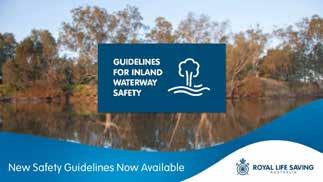
To subscribe and access the guidelines: royallifesaving.com.au/guidelines-forinland-waterway-safety

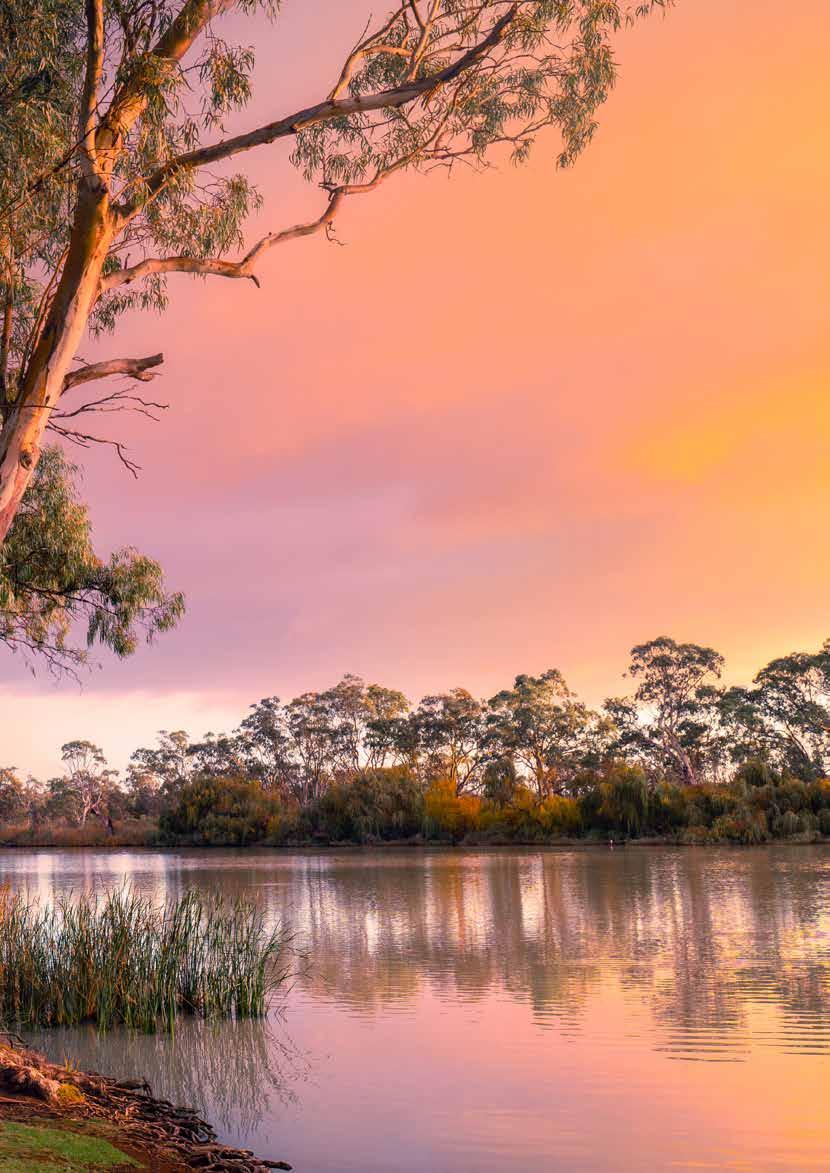
The Respect the River program focuses on engaging regional, remote and inland communities by delivering targeted drowning prevention programs and water safety initiatives tailored to the needs of vulnerable populations. The program has had a significant impact across Australia, reaching hundreds of thousands of people.
The Australian Capital Territory (ACT) community benefited from the successful delivery of the Ngadyung Swim and Survive program, which engaged local children and families in vital water safety education, promoting safer participation in aquatic activities. Additionally, the completion of the ACT Water Safety Plan was a key milestone, with community leaders and local government collaborating to address specific drowning risks, fostering long-term community ownership of water safety.
In New South Wales, the Hawkesbury region became a focal point for water safety, where the Drowning Prevention Plan was implemented in collaboration with local councils and Indigenous communities.
Royal Life Saving supported the delivery of regionspecific interventions, particularly in the Huon and Nepean River areas, raising awareness of inland water risks and positioning the region as a model for similar efforts across the state.
In the Northern Territory, Royal Life Saving worked closely with Indigenous communities and regional stakeholders to deliver tailored water safety programs in remote areas.
These initiatives addressed the challenges posed by the Territory’s vast inland waterways, providing life-saving water safety education to children and community members and collaborating on essential safety infrastructure installations.
Queensland
Royal Life Saving Queensland delivered over 400 educational events, partnering with local governments and Indigenous groups to tailor programs to specific community needs. Highlights included intensive water safety classes in Ipswich for overseas-born residents and the Migrant Water Safety Program on the Sunshine Coast, which provided essential swimming and survival skills. The Gwonggubunga Program, in collaboration with the KARI Foundation, empowered Indigenous communities by training swim teachers and delivering survival programs for children, covering a variety of aquatic environments from pools to creeks and beaches. Respect


In the Riverland region, Royal Life Saving developed and implemented a sustainable Local Water Safety Plan in consultation with community stakeholders, including local councils and Indigenous leaders.
The focus on long-term sustainability and community involvement resulted in widespread support and a significant improvement in water safety across the region.
Victoria’s inland water safety efforts were highlighted by the Inland Waterway Safety Forum in Bendigo, which focused on the Loddon Mallee region, a known drowning hotspot. Over 120 stakeholders gathered to address regional drowning risks.
The Make the Right Call campaign also emphasised the dangers of alcohol near inland waterways, focusing on risky behaviours such as swimming while impaired and failing to wear life jackets, leading to increased community engagement and safer practices.
Tasmania delivered the Active Adults water safety workshops, targeting senior citizens to enhance their confidence and knowledge in aquatic environments. In addition, Royal Life Saving collaborated with local stakeholders to install over 100 updated CPR signs at key locations, providing quick access to lifesaving information.
In Western Australia, Royal Life Saving delivered eight Local Water Safety Plans in remote Aboriginal communities, including Warmun, Fitzroy Crossing, Karratha, Burringurrah, and others.
These plans focused on delivering tailored water safety strategies and supporting community-driven initiatives. Additionally, Royal Life Saving delivered Swim and Survive and Bronze Medallion programs to 160 Aboriginal-identifying community members, equipping participants with lifesaving skills in some of the state’s most remote regions.
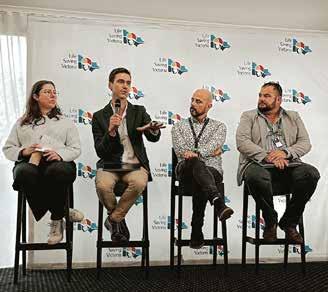
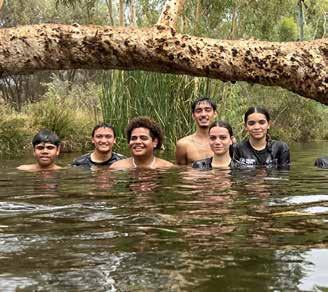
Striving for consistent brand, united voice, an aligned workforce and membership, and agile and impactful social enterprises.
Across Australia, our State and Territory Member Organisations have worked tirelessly to provide communities with essential water safety information and programs, reinforcing our commitment to making water safety accessible to everyone, no matter where they live.
Our initiatives have focused on:
Reconciliation and Cultural Connection
Programs and Support for Multicultural and Vulnerable Communities
Youth Development and Lifelong Water Safety Skills
Accessibility and Inclusive Programs
Community Leadership and Industry Collaboration



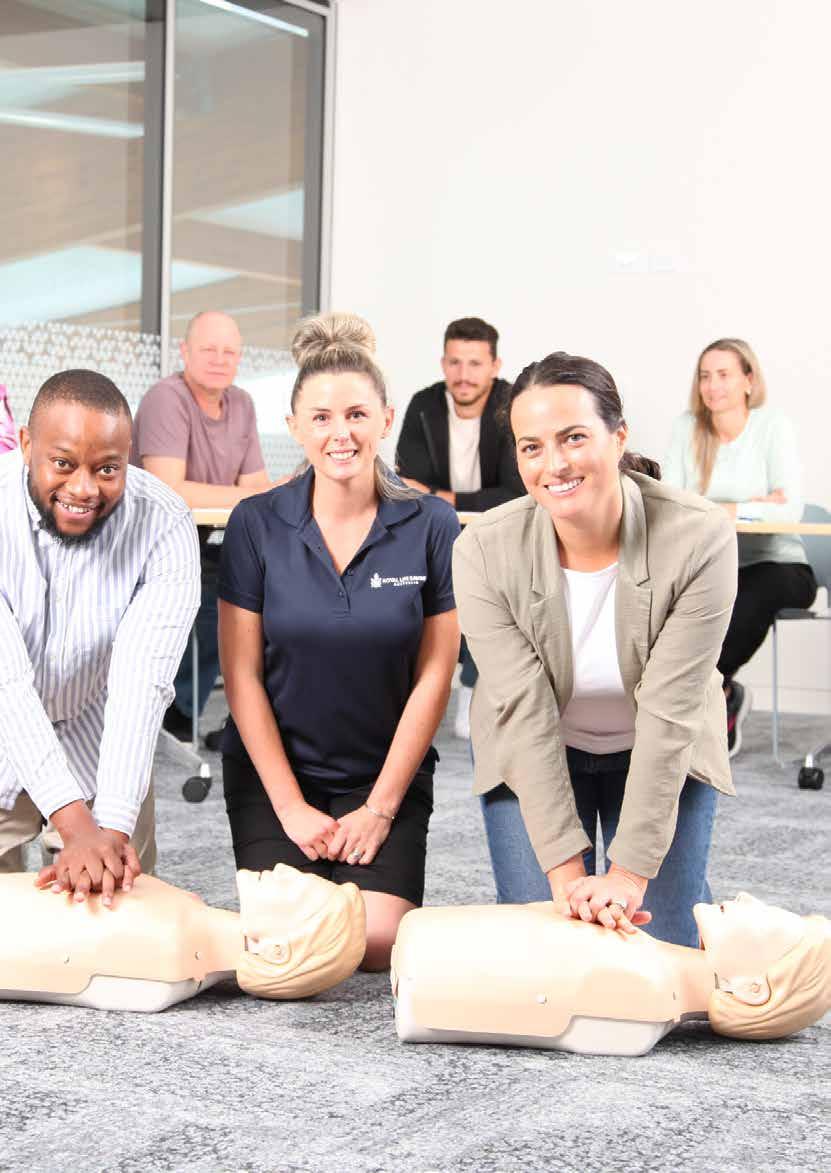
In 2022, Royal Life Saving Australia launched its Reconciliation Action Plan (RAP), committing to meaningful reconciliation with First Nations people.
Guided by relationships, respect and opportunities, the RAP focuses on creating lasting benefits for Aboriginal and Torres Strait Islander communities by fostering economic equity and supporting self-determination.
We aim to strengthen partnerships that empower these communities to lead, design and participate in water safety programs, enhancing safety, recreation and employment opportunities.
Key Achievements for 2023-24
Learning Framework: Developed a learning framework integrated into new employee onboarding at Royal Life Saving Australia.
Research Investments: Funded research on the connections and significance of water for Aboriginal and Torres Strait Islander peoples.
Collaborative Workshop: Co-hosted a workshop with an Aboriginal and Torres Strait Islander research team focused on connections to country, land, and waterways.
In line with our RAP focus on relationship-building, we deepened our two-year research partnership with Guunu-Maana (Heal) Aboriginal and Torres Strait Islander Health Program at The George Institute for Global Health. This collaboration involved two significant projects to enhance our understanding of First Nations cultural connections to water.
1. Research Report:
• Objectives: Identify current swimming and water safety programs for Aboriginal and Torres Strait Islander communities and explore cultural connections to waterways.
• Findings: Emphasised the need for water safety programs to reflect community-specific social, economic, and cultural interests through a structured framework with goals at community, state, and national levels.
• Recommendations:
- Integrate Aboriginal and Torres Strait Islander water knowledge into safety programs and education.
- Review water safety workplaces for cultural inclusion.
- Promote cultural capability training across Australian water safety organisations.
- Leverage Indigenous learning methods to engage children, youth and communities.
2. Sydney Workshop (July 2024):
• Objective: Convene experts in Aboriginal health, community members, and the water safety sector to discuss connections to country and waterways and their role in enhancing community wellbeing.
• Highlights: Hosted at the National Centre for Indigenous Excellence (NCIE) in Redfern, the workshop featured a smoking ceremony by Elder Uncle Les McLeod, stories from local Elders on connections to Sky, Seas, and Water, and insights on collaborative community engagement.
• Outcome: New perspectives on integrating cultural meanings into Royal Life Saving Australia and Australian Water Safety Strategy work and the potential for a broader First Nations water safety symposium.

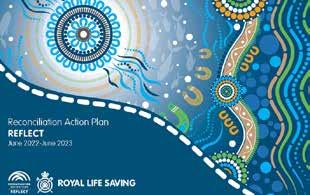
Pool Lifeguard Challenges, hosted annually by Royal Life Saving member organisations, celebrated top pool lifeguards across states and territories. These events test lif eguards’ teamwork, communication, fitness and lifesaving skills through simulated scenarios, including managing major incidents like emergency evacuations and medical crises alongside pool-based events such as rescue tows, line throws and manikin relays. Teams of four representing their facilities competed to reinforce critical skills and enhance safety practices under professional guidance in a fun, supportive environment.
Events over the past year included:
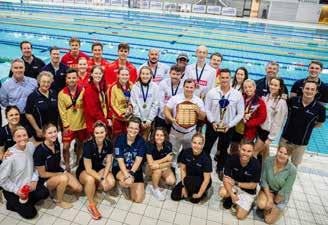
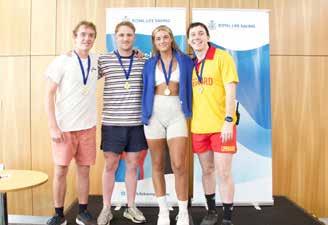

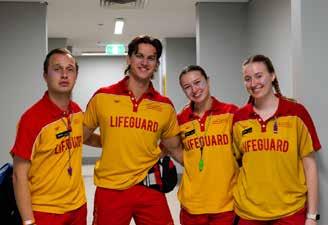
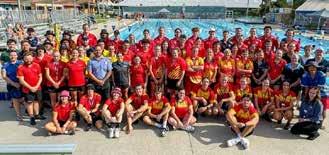
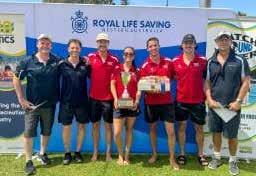
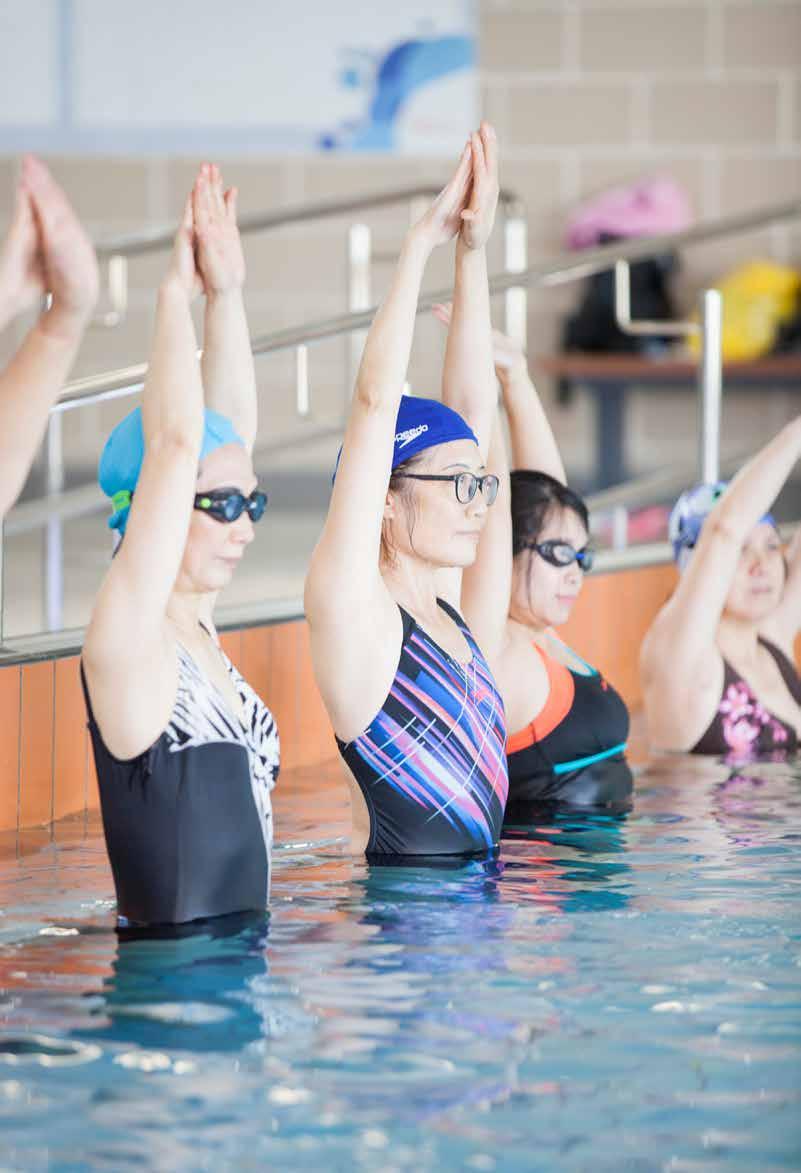
Multicultural communities in Australia face a higher risk of drowning due to varied swimming abilities and limited water safety knowledge. This includes visitors, international students and residents born overseas.
Royal Life Saving is committed to addressing these disparities by delivering programs across Australia that help women from multicultural backgrounds overcome their fear of wat er and, for many, learn to swim for the first time. Through these initiatives, we aim to foster water safety skills and confidence in communities that need it most.
In collaboration with Warrawong Community Hub and with funding from Figtree Sports, the Illawarra office provided 30 local women the opportunity to participate in a transformative 10-week swimming course at McKeon’s Swim School. For many, cultural barriers and personal trauma had previously prevented them from engaging in swimming. Some participants had never learned to swim, while others carried the weight of losing a loved one to drowning. The program aimed to create a safe, supportive, womenonly space where participants could begin overcoming their fears and, for many, learn to swim.
“The new program helping Illawarra women overcome their fear of water.”
Royal Life Saving Western Australia, in partnership with the Department of Home Affairs, delivered an eight-week women’s only Swim and Survive program at the South West Sports Centre in Bunbury. The program provided 24 participants with essential swimming skills and water safety techniques, aiming to enhance confidence and abilities in the water. This initiative created a supportive, inclusive environment, equipping women with valuable lifesaving skills to help them stay safe in and around water.
Parap Pool, Northern Territory
In collaboration with Melaleuca Australia, Royal Life Saving Northern Territory offered the Health My Way program at Parap Pool, providing 20 migrant women with their first water safety and swimming experience. This five-week program included swimming skills, survival techniques, lifesaving skills and basic resuscitation training, empowering participants with essential knowledge to enhance their safety and confidence around water.
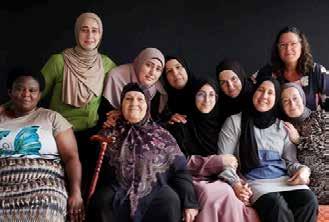
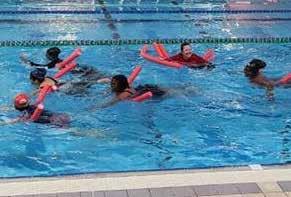
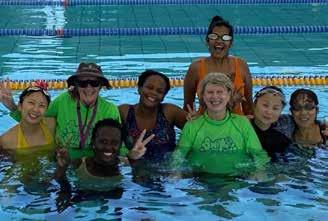
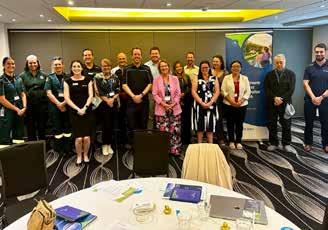
Drowning Prevention Workshop
The Australia Capital Territory (ACT) Drowning Prevention Workshop and Plan, funded by the Australian Government with support from the ACT Government, tackled the vital issue of drowning prevention in the ACT.
Facilitated by Royal Life Saving ACT, the workshop convened over 45 organisations, including ACT Government departments, industry leaders and community groups, to foster collaboration toward a shared safety goal.
Key outcomes of the workshop:
1. Development of a comprehensive Drowning Prevention Plan.
2. Enhanced stakeholder collaboration for plan implementation.
3. Public awareness campaigns to inform and educate.
4. Targeted recommendations to strengthen drowning prevention strategies in the ACT.
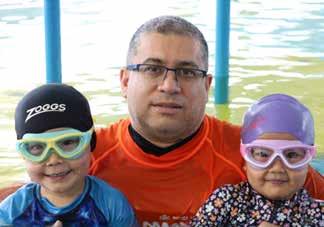
Royal Life Saving New South Wales (NSW) proudly launched Project Harmony in partnership with the NSW Government to address the pressing need for drowning prevention among vulnerable communities. This initiative offers free swimming lessons to 1,000 children aged three to six across the highest-risk areas in the state, particularly targeting communities in western Sydney. For many participants, this will be their first experience with water safety, breaking down barriers to access lifesaving skills.
The launch event at Liverpool’s Whitlam Leisure Centre on 4 April 2024 emphasised the program’s mission of inclusivity and accessibility. Long-term data highlights a critical need: eight of the 12 local government areas with Australia’s highest drowning rates are located in western Sydney. By offering 10 free swimming lessons in collaboration with local councils, pools and community leaders, Project Harmony aims to equip young children with essential water safety skills, building a safer future for these communities.
In collaboration with the Orange Aquatic Centre, the Western Regional Office made significant progress in meeting local workforce needs through the Regional Industry Education Partnership (RIEP) program offered by Training Services NSW. This year’s focus on training and employment opportunities for local senior high school students as Learn to Swim instructors and Pool Lifeguards at the Orange Aquatic Centre, which faced a critical staff shortage ahead of the summer season. Through the RIEP program, free training was offered to selected candidates.
Eighteen local high school students completed the Swim Teacher Skillset (SISSS00112-Swimming and Water Safety Teacher + HLTAID009 Provide CPR), with 17 now employed as Learn to Swim Instructors at the Centre. Additionally, eleven students acquired the Pool Lifeguard Skillset (SISSS00133-Pool Lifeguard + HLTAID009 Provide CPR), with nine currently working as lifeguards at the Centre.

Community Engagement Through Widespread Programs and Events
Royal Life Saving Northern Territory (NT) reached 110,127 people throughout the NT through 83 community events and programs, achieving its strategic goal of engaging more than 40 per cent of the NT population.
• Swim and Survive Program: 10,726 primary students participated, with 338 achieving the national benchmark (Level 7). However, participation remains low due to the closure of key pools in Palmerston, Casuarina, and Katherine, impacting access for children. Royal Life Saving NT continues advocacy efforts for government funding to support swimming education for all primary school students.
• Remote Swim, Survive, and Strive Project: 866 children from 20 remote schools participated, with 60 students achieving Level 7 or higher. This project included training and AUSTSWIM mentoring for 428 local community members, providing valuable employment and volunteer opportunities in remote areas.
• Training Achievements:
10,843 certificates and 4,815 statements of attainment were issued, with 45% of training conducted in regional and remote areas. A total of 332 courses were completed by 2,442 participants across the NT.
• Water Safety Awareness Program:
Supported by the NT Government, this program enrolled 2,009 children and offered free water safety lessons. Since its inception, 34,135 children have participated, with positive feedback from families using Learn to Swim Vouchers.
• Pool Lifesaving Sport:
Over 3,000 children joined pool lifesaving carnivals in Darwin, Katherine, Alice Springs, Tennant Creek, and remote communities.
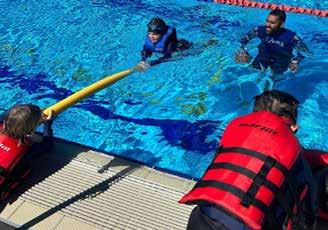
Queensland
Empowering Indigenous Youth through the Gwonggubunga Swim Program
This year, the Gwonggubunga Swim Program provided Indigenous youth (ages 6–14) with essential water safety, CPR and surf skills while fostering cultural connections and building lasting community bonds. Three Indigenous instructors, qualified with their Bronze Medallion and Swim Teacher certifications, independently led the program for the third consecutive time, highlighting its sustainable impact and dedication to passing down vital skills within the community.
This accomplishment was made possible through partnerships with Royal Life Saving Queensland, AWM Amaroo, and Neptune Royal Life Saving Club, whose support was instrumental to the program’s success.
Queensland Aquatic Industry Safety Committee (QAISC)
In response to the 2023 South East Queensland Water Safety Strategy, Royal Life Saving Queensland established the Queensland Aquatic Industry Safety Committee (QAISC) to improve safety and foster collaboration across the state’s aquatic industry.
This new committee addresses the high drowning rates in South East Queensland’s public pools by creating communities of practice focused on safety and compliance.
The QAISC held its first meeting on 21 June 2024, where representatives from local government, industry management groups, and industry bodies identified priorities to improve safety at public aquatic facilities. Discussions addressed challenges such as low rates of safety assessments—only eight per cent of pools conducted assessments in the past year— underscoring the need for supervision standards and staff qualifications. The QAISC aims to elevate safety standards and drive consistent implementation across Queensland’s aquatic facilities by targeting these critical areas.
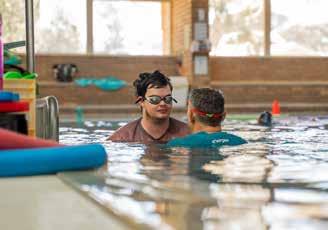
Supported by the Department for Premier and Cabinet, Royal Life Saving South Australia (SA) successfully delivered six programs for Autistic children, including two in regional areas. These programs provided a safe, sensory-friendly environment for children to learn essential water safety skills, with each lesson conducted in a 1:1 format. This initiative offered vital support for families who do not receive NDIS funding for ongoing lessons and are often unable to access regular swimming instruction due to a lack of suitable facilities and trained instructors.
In May 2024, Renmark, SA, hosted the Riverland Water Safety Roundtable, bringing together a diverse group of drowning prevention advocates. The roundtable provided a platform to discuss, debate, and explore the unique local context of drowning prevention in the Riverland region. Attendees worked to strengthen partnerships and collaboratively co-designed a water safety strategy aimed at driving impactful, communityfocused action.
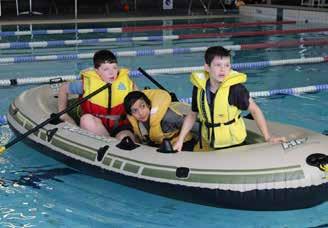
With support from the federally funded Inland Water Safety Program, Royal Life Saving Tasmania sponsored students from Parklands High School in Burnie to participate in the Aquatic Survival Program. Located on Tasmania’s Northwest Coast near multiple inland waterways, Parklands High faces unique water safety challenges, making aquatic survival skills critical for its students. The program targeted at-risk grade 7 students and focused on survival skills suited to all swimming abilities, emphasising life jacket use and risk identification around water. Delivered in partnership with Burnie Aquatic Centre, the five-day program equipped 104 students with essential water safety knowledge and drowning prevention skills, preparing them to make safer choices in aquatic environments.
Through the Active Tasmania initiative funding, Royal Life Saving Tasmania’s Learn to Swim program has provided critical swimming lessons to 180 young Tasmanians in out-of-home care over the 202324 financial year. Delivered across 15 swim schools statewide, the program offers weekly lessons for participants aged six months to 21 years, ensuring that young people across Tasmania have access to vital water safety skills.
Now in its sixth year of support from the Tasmanian Government, this program has made a measurable difference, enabling many participants to join school swimming programs and carnivals alongside their peers with newfound confidence. Caregivers are also actively involved, gaining opportunities to discuss water safety with the children and better understand their swimming abilities.
Additionally, the program’s funding has allowed for the training of 10 new Swimming and Water Safety Teachers across Tasmania. This effort helps address the instructor shortage caused by the COVID-19 pandemic, allowing aquatic facilities to meet the rising demand for swim lessons and maintain essential water safety education throughout the state.
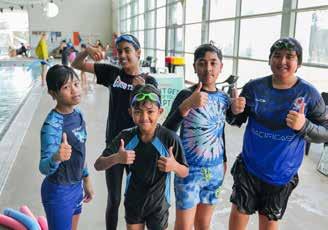
In 2023-24, Life Saving Victoria (LSV) set a 17-year record in diversity and inclusion program participation, surpassing last year’s record participation numbers, with a total of 30,552 individuals taking part. This included 2,100 seniors and individuals with disabilities.
Program engagement figures included:
• 22,043 in classroom programs
• 7,040 in beach programs
• 1,020 in swimming lessons
• 76 in accredited training courses
This record-breaking participation was made possible thanks to generous support from 14 separate funding bodies, including contributions from federal, state, and local government agencies, philanthropic organisations and bequests.
LSV’s Aquatic Industry Summit, held in October 2023, saw a significant evolution from previous years with the delivery of two aquatic industry streams: safe pool operations and swimming and water safety education. This introduction of the water safety education stream was a significant highlight, showcasing the sector’s commitment to enhancing water safety initiatives across Victoria. With over 300 attendees and industry experts gathering, the Summit served as a platform to discuss challenges, the aquatic industry’s future direction and the latest advancements in aquatic safety and facility management.
Summit themes included:
• Water Safety in Focus
• Navigating the Future of Aquatics: Climate
Adaptation and Efficiency in Pool Infrastructure
• Flipping Traditional Lessons in Water Safety Education
• Planning, Technology and Partnerships
• Swimming Upstream: Industry Updates
• Empowering Aquatic Leaders
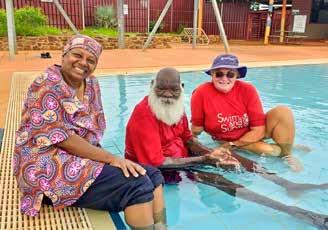
Swimming Meets Song: Empowering Elders in Halls Creek
Royal Life Saving WA, in partnership with the Kimberley Language Resource Centre and with support from Lotterywest, launched a unique initiative to bring water safety education to Indigenous Elders in Halls Creek. Community Trainer Amanda led swimming lessons tailored for male and female Elders, fostering a supportive and culturally inclusive environment. This initiative is part of a larger mission to address the high drowning rates in the Kimberley region, where Aboriginal Australians represent over a third of drowning deaths.
The sessions were filled with joyful singing in native languages. They provided a meaningful space for Elders, including Menkawum Ngurra Frail Home residents, to build water confidence and safety skills. For many, this was not only a chance to increase their water confidence but also an opportunity for personal joy and connection.
The future of water safety in Western Australia (WA) is in good hands thanks to the dedicated team of Swim Instructors. In Term 1 of 2024, Royal Life Saving WA, in partnership with the Department of Education, provided Interm swimming lessons in communities like Dalwallinu, Narembeen, and Narrogin. This initiative brought together enthusiastic instructors across WA, creating strong, positive role models for children learning water safety.
Royal Life Saving WA stationed teams in Newman, South Hedland, Mount Barker, Williams, Port Hedland, and Wiluna, which featured many young instructors. In Newman, two teams with five instructors aged 18 to 24 led lessons, while three young adult teachers facilitated lessons in Mount Barker, capturing the essence of the Youth Week 2024 theme, “Head, Body, Heart.”
By continuing to train and mentor young instructors, Royal Life Saving WA supports a nationwide mission: to create a nation free from drowning.
Carolyn Asher Appointed Life Member
Carolyn’s journey with the Royal Life Saving Society began in 1962 in Victoria, and she has been active in Queensland since 1991.
For over five decades, Carolyn has nurtured a deep passion, love and respect for water safety. She often starts her courses and training sessions by saying, “The knowledge gained through Royal Life Saving can stay with you for a lifetime and may one day save your life or the lives of others.” This philosophy has been at the heart of her life’s mission.
Her involvement with Royal Life Saving has taken her across Queensland and to every state in Australia, where she has proudly, in her own words, “spread the Royal Life Saving history, knowledge, skills, and education to communities of all ages and swimming abilities, from babies to grandies.”
Carolyn is a certified Royal Life Saving trainer in CPR, First Aid, Bronze Medallion and is a pool lifeguard. She has also served as a competition official and coach for Royal Life Saving Queensland athletes and has been actively involved in the National Championships (now called the APLSC) since 1987.
Since 2009, Carolyn has been a Queensland State Board member and has held the position of Secretary since 2015. We are honoured to congratulate Carolyn on becoming a Life Member of the Royal Life Saving Society – Australia.

Royal Life Saving Society –Australia
Life Governors
2015 John McClelland AM (QLD)
2015 Alan B.Swinton OAM QPM (TAS)
2018 Daphne Read AO (NT)
2022 Terence Higgins AO
Life Members
1995 Neville Bayfield OAM (NSW)
1995 Gerald Brameld OAM (QLD)
1998 Victor John Dennis (WA)
1998 Ian Mackie AM (NAT)
1998 Gwendolyn Welford BEM(C) (QLD)
1999 Alan B. Swinton OAM QPM (TAS)
2000 V.J Forde AM (SA)
2000 John McClelland AM (QLD)
2002 Heather MacGowan OAM (WA)
2004 Theresa Leopold (SA)
2004 Faye Trevor (SA)
2005 Lesley Bartlett (SA)
2005 Professor John Pearn AO RFD (QLD)
2005 Patricia Quick (SA)
2006 Jan Burton (SA)
2006 C Dedman (SA)
2006 David Dewar (SA)
2006 Raymond M Martin OAM (SA)
2006 Vincent McStraw (SA)
2006 Mark Needham (SA)
2006 Ann Price (SA)
2007 John Kew (SA)
2007 Hayden Lamshed (SA)
2007 Faye Milham (SA)
2008 Dorothy E Brown OAM (NSW)
2009 Rod Welford (QLD)
2010 The Hon.Terence Higgins AO QC (ACT)
2010 Dianne Montalto ESM (VIC)
2010 Barbara Morgan OAM (VIC)
2010 Karen Freak (SA)
2011 Robyn Pryce-Jones (TAS)
2013 Anne-Maree Gardiner AM (VIC)
2013 Gary W Kearney (TAS)
2013 Sandra Vander Pal (VIC)
2014 Les Mole JP (QLD)
2014 Daphne Read AO (NT)
2016 Ernita McGrath (NSW)
2016 Glenda Bowen Pain AM (SA)
2017 Dr Shayne Baker OAM (QLD)
2018 Tom Ballantyne (WA)
2019 Randall Cook (NT)
2020 Pam Neenan (NSW)
2021 Kevin Burrowes OAM (SA)
2022 Marion Price
2023 Carolyn Asher
Past Presidents
1934-1951 Sir Thomas W White
1951-1977 Justice Percy Joske
1977-1979 Sir Percy Joske
1979-1987 Sir Basil Osborne CBE
1987-1994 Neville Bayfield OAM
1994-1997 Heather MacGowan OAM
1997-2003 Chief Justice Terence
Higgins AO QC
2003-2009 Dr Shayne Baker OAM
2009-2011 Chief Justice Terence
Higgins AO QC
2011-2012 Les Mole JP
2012 -2015 Dianne Montalto ESM
2015-2018 Penelope Snashall
2018-2021 Cameron Eglington
2021-2023 Dr Mitchell Hartman
Royal Life Saving Society –Commonwealth
Honorary Life Governors
1977 Baden Pattinson (SA)
1981 W Blakeney (NSW)
1981 George Turnbull (NSW)
1984 Francis Henry (NSW)
1999 Kevin Burrowes OAM (SA)
1999 Barry Stanton (SA)
2004 John Kew (SA)
2004 Raymond M Martin OAM (SA)
2004 Ann Price (SA)
2011 Lesley Bartlett (SA)
2011 Theresa Leopold (SA)
2011 Patricia Quick (SA)
2011 Faye Trevor (SA)
2012 Alan B.Swinton OAM QPM (TAS)
Honorary Life Members
1977 Francis Henry (NSW)
1977 George Turnbull (NSW)
1983 P Margaret Stevens (VIC)
1988 Stanley Blanks (VIC)
1988 Cam Fitzgerald (VIC)
1990 Jack Farmer (VIC)
1993 James Burrowes (VIC)
1994 Norman Farmer AM ESM (Nat)
1995 Kevin Burrowes OAM (SA)
1995 Phillip Rice (VIC)
1995 Ken Southgate (QLD)
1995 Barry Stanton (SA)
1999 Dr Mervyn Allen (SA)
1999 John Coles (SA)
1999 V J Forde (SA)
1999 Raymond M Martin OAM (SA)
2000 John Kew (SA)
2000 G H Krueger (SA)
2000 Margaret Krueger (SA)
2001 Ann Price (SA)
2003 Gerald Brameld OAM (QLD)
2003 John McClelland AM (QLD)
2004 Bruce Campbell (QLD)
2004 Anita Eifler (WA)
2004 Ross Williams (QLD)
2005 Alan B.Swinton OAM QPM (TAS)
2006 Theresa Leopold (SA)
2006 Faye Trevor (SA)
2007 Lesley Bartlett (SA)
2007 Theresa Leopold (SA)
2007 Patricia Quick (SA)
2007 Faye Trevor (SA)
2008 David Dewar (SA)
2009 Barbara Morgan OAM (VIC)
2011 Faye Milham (SA)
2018 Anne-Maree Gardiner AM (Nat)
2018 Gary Kearney (TAS)
2020 Roz Grey OAM (NSW)
Patron
HIS EXCELLENCY GENERAL THE HONOURABLE DAVID HURLEY AC DSC (RETD)
Governor-General of the Commonwealth of Australia (until 30 June 2024)
HER EXCELLENCY THE HONOURABLE MS SAM MOSTYN AC
Governor-General of the Commonwealth of Australia (from October 2024)
National Board of Directors
ALEXANDRA ASH MBA, GAICD
President
Alexandra was appointed as an Independent Director to the Board in March 2022 and was confirmed as National President in November 2023.
JIM WHITESIDE
Deputy President
Jim was appointed to the Board in October 2016 and was confirmed as National Deputy President in November 2023.
PROF. RICHARD FRANKLIN PhD, FACTM, FPHAA, FAR
Richard was appointed as an Independent Director to the Board in March 2022 by Royal Life Saving Society Australia National Board.
KIA LOGAN
Kia was appointed as a Director in December 2023 by Royal Life Saving Society - Australia, South Australia.
PAUL REYNOLDS
Paul was appointed as a Director in November 2019 by Royal Life Saving SocietyAustralia, Australian Capital Territory.
MARK SCOTT ESM
Mark was appointed as a Director in November 2019 by Royal Life Saving SocietyAustralia, Victoria.
JAMES SHERIDAN
James was appointed as a Director in November 2021 by Royal Life Saving SocietyAustralia, Northern Territory.
NICOLE SLOAN
Nicole was appointed to the Board in November 2023 by Royal Life Saving SocietyAustralia, Queensland.
DR ERICA DAVISON
Erica was appointed as a Director in February 2022 by Royal Life Saving SocietyAustralia, Western Australia, and resigned in September 2023.
DAVID DEWAR
David was appointed as a Director in November 2019 by Royal Life Saving SocietyAustralia, South Australia and completed his term as a Director in October 2023.
DR MITCHELL HARTMAN B Sc; MBBS; GAICD
President
Mitch was appointed as an Independent Director in February 2018 and was elected as National President in October 2021. Mitch resigned in October 2023.
PENELOPE SNASHALL B.Bus
Penelope was appointed as a Director in November 2013 by Royal Life Saving Society Australia, Tasmania. Penelope completed her term as Director in October 2023.
ROD WELFORD
Rod was appointed as a Director in December 2019 by Royal Life Saving Society Australia, Queensland and completed his term as a Director in October 2023.
Company Secretary
JUSTIN SCARR MBA B.Ed
Justin has been a senior executive for the past 25 years and was appointed as Chief Executive Officer and Company Secretary in January 2013.
Royal Life Saving relies on the support of various committees and advisers. The committees span our areas of interest and enable us to capture the energy and enthusiasm of our network.
National Advisers
Dr Shayne Baker OAM - Education and Training (until October 23)
Geoff Grey - Sport (until October 23)
Professor John Pearn AO RFD - Medical
National Finance and Audit Committee
Anthony Bandle (Chair) - (until May 24)
Jim Whiteside
James McClelland BM OAM
Justin Scarr - National
Linda Luu - National
Honours Committee
Roz Grey OAM (Chair) - NSW
James McClelland BM OAM - QLD
Brione Rundle - SA
Dianne Montalto ESM - VIC
Belinda Lawton - National (until October 23)
Justin Scarr - National (from November 23)
CEO Working Group
Justin Scarr (Chair) - National
Michael Ilinsky - NSW
Floss Roberts AM - NT
Paul Barry - QLD
Jake Culkin - SA
Catherine Greaves - VIC
Peter Leaversuch - WA
Sport Committee
Geoff Grey (until October23)
Brooke Cherfils - National
Andrew Bowden - NSW
Laura Withers - NT
Paul Barry - QLD
Jake Culkin - SA
Joanne Teagle - VIC
Jen Jones - WA
Roz Grey OAM - Official Representative
Ethan Garland - Athlete Representative
Jeannie Baxter-Reid - Coach Representative
Anni Gardiner - International Delegate
Dr Shayne Baker OAM - ALT Chair - Selections Panel
Penny Hodgers - ALT Collaborative Panel
Training and Workforce Development Committee
Shaun Jackson - National
Penny Hodgers - NSW
Paul Barry - QLD
Rebecca Gawne - NT
Michelle Williams - SA
Andy Dennis and Kevin Brabazon - VIC
Ian Brown and Jacqui Byala - WA
Marketing and Communications Committee
Monique Sharp - National
Susie Smith - National
Craig Roberts - NSW
Kewley McCaskill - NSW
Floss Roberts - NT
Elise Butler - QLD
Jake Culkin - SA
Sarah Garrett - SA
Andrew English - VIC
Tori Glenister - VIC
Lauren Nimmo - WA
Becca Osborn - WA
Research Committee
Stacey Pidgeon - National
Will Koon - National
Lauren Miller - National
Lauren Nimmo - WA
Bernadette Matthews - VIC
Hannah Calverley - VIC
Grace Strugnell - VIC
Beata Kiss - VIC
Water Safety Education Committee
Penny Larsen (Chair) - National
Renee Amidy - NSW
Hannah Skuodas - NSW
Laura Withers - NT
Ben Jimmieson - QLD (until February 24)
Mattii McGill - QLD (from February 24)
Emily Musitano - SA (from February 24)
Michelle Williams - SA
Jacqui Taylor - VIC
Bree Forbes - VIC
Trent Hotchkin -WA
Amy Benjamin - WA (until April 24)
Anna Haslinger - WA (from April 24)
Aquatic Risk Committee
Alek Olszewski - VIC
Andy Dennis - VIC
Travis Doye - WA
John East - WA
Craig Roberts - NSW
Floss Roberts - NT
Nikki Thornhill - QLD
Declan Gillard-Martin - SA (until April 24)
Jake Culkin - SA
International Life Saving Organisations
Committee Membership
Term: February 2021 to September 2024
Justin Scarr
Drowning Prevention Commission Chair, ILS Asia-Pacific Secretary General
Professor John Pearn AO RFD Medical Committee
Dr Amy Peden and Stacey Pidgeon Drowning Prevention Commission
Dr Shayne Baker OAM Rescue Commission
Anne-Maree Gardiner AM Sport Commission
Brooke Cherfils
Sport Education and Sport For All Committees
Jake Smith Athletes Commission
Commonwealth Royal Life Saving Society Committee Membership
Pene Snashall (until January 24)
Alexandra Ash (from March 24) Board of Trustees
Roz Grey OAM Honours Committee
Anne-Maree Gardiner AM
Portfolio Director Commonwealth Lifesaving Championships
Dr Shayne Baker OAM
Portfolio Director Capacity Building (until August 2024)
Robert Reid
Portfolio Director Digital Resource Platforms
James McClelland BM OAM Heritage Working Group
Australian Lifesaving Team
Penny Hodgers Collaborative Panel
Dr Shayne Baker OAM Chair of Selectors
Andrew Bowden Pool Coach
Rachel King
Assistant Pool Coach
Chief Executive Officer
Justin Scarr
Marketing and Events
National Manager Marketing and Events
Monique Sharp
National Manager Strategic Communications and Partnerships
Belinda Lawton (until October 23)
Content and Digital Communications Executive
Sophie Monks (until March 24)
Susie Smith (from May 24)
Event Co-ordinator
World Conference on Drowning Prevention 2023
Maria Matheos (until January 2024)
Operations
General Manager Capability & Industry
RJ Houston
National Manager Education and Training
Penny Larsen
National Manager Industry Safety
Marty Moran
National Manager Training and Workforce Development
Shaun Jackson
Workforce Development Specialist
Tess Craigie (from October 23 to July 24)
National Manager Lifesaving Development
Brooke Cherfils
IT Manager National Projects & Integration
Manik Khanna
Research and Policy
National Manager Research and Policy
Stacey Pidgeon
National Manager Drowning Prevention Strategy
William Koon
Senior Research and Policy Officer
Lauren Miller
Senior Research Fellow
Professor Richard Franklin
Dr Amy Peden
Dr John Lippman OAM
Finance and Administration
National Manager Finance
Linda Luu
Administration and Accounts Officer
Yazmin Jaime (until June 24)
Bounthanh Chanhdara (from June 24)
The National Board of Directors for Royal Life Saving Society – Australia continues to maintain a sound and secure financial position.
STATEMENT OF COMPREHENSIVE INCOME for the year ended 30 June
to the Members of RLSSA
STATEMENT OF FINANCIAL POSITION as at 30 June 2024
FUNDS
Royal Life Saving Society – Australia would like to thank the following organisations for their continued support.
Australian Government
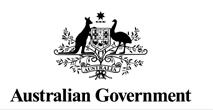
International Organisations
Corporate Sponsors

Media Partners

Other Supporters
